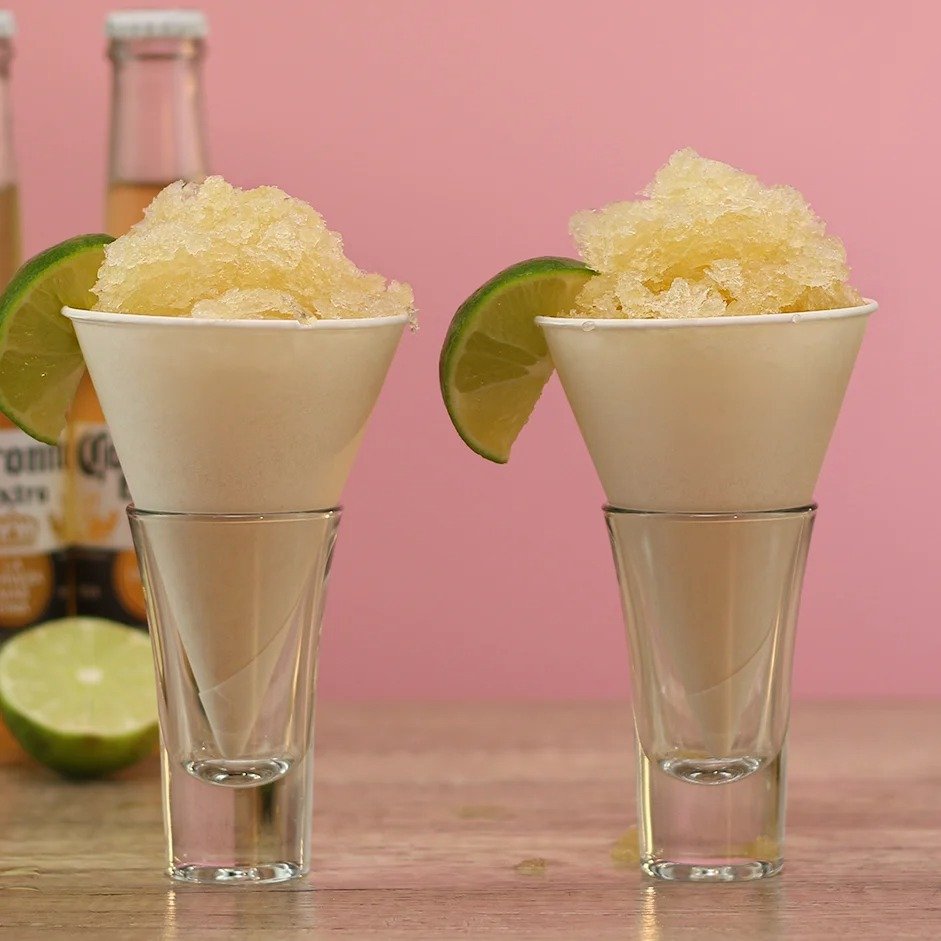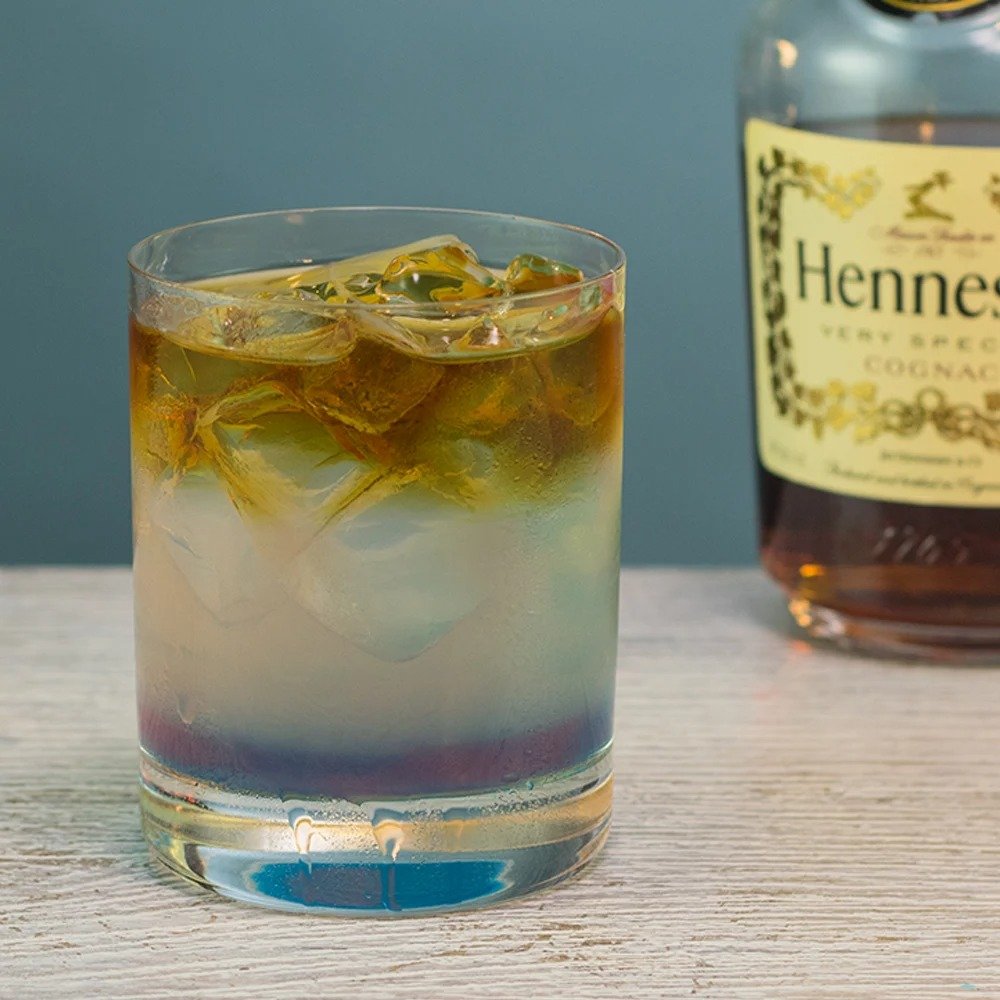
The Ultimate Vodka Guide: Everything You Need to Know!
WELCOME TO VODKA
OK ama-tenders (amateur bartenders, we're going to make it a thing, just wait), it's time to learn all about vodka, a.k.a that odorless, colorless booze that you've stuck in just about every cheap mixed drink you've ever made. And luckily for you, compared to tequila, rum, and whiskey, vodka is way easier to learn about because it's more or less just ethanol and water. Seriously, there's a reason this spirit goes well with tons and tons of drinks — it just tastes like pure alcohol and nothing else. https://giphy.com/embed/XoyRvOOBXOxFeq9twJ But vodka's lack of flavor, nuance, color, and anything else that most other popular spirits have is its strength, not its weakness. While a liquor like whiskey requires a refined palate and a lot of knowledge about which types work best in which mixed drinks, vodka is straightforward and always ready to rock and roll. You can also — despite popular opinion — definitely get away with cheap vodka. (We'll go deeper into how to turn cheap stuff into great stuff in further detail below.) https://giphy.com/embed/26FPst2UjefrkhcvS So sit back, grab yourself some caviar, olivier, dumplings, and/or borscht, and prepare to learn more about vodka than you ever have before. By the time you're done with this little Ultimate Vodka Guide, you'll know everything from the history of vodka to how to make vodka to the different categories of vodka to how to drink vodka like a true connoisseur.WHAT IS VODKA?
First up we need to answer this question: What exactly is vodka? And no, the average response of "booze made from potatoes that Russian villains in movies drink" is most definitely not a satisfactory answer. According to Wikipedia's definition, "vodka... is a distilled beverage composed primarily of water and ethanol, but sometimes with traces of impurities and flavorings." Wikipedia adds that "Traditionally, vodka is made through the distillation of cereal grains or potatoes that have been fermented, though some modern brands... use fruits or sugar." But even though that definition gives you the broad strokes, let's break down those steps real quick here (we'll go much deeper on this process in the below section). What you'll need to do to make vodka is take some grains (such as rye, rice, and wheat) or fruits (grapes, apples, etc.) or vegetables (corn, potatoes, etc.) or even straight sugar, and then ferment said ingredients, and finally distill the alcohol made from the fermented base ingredients.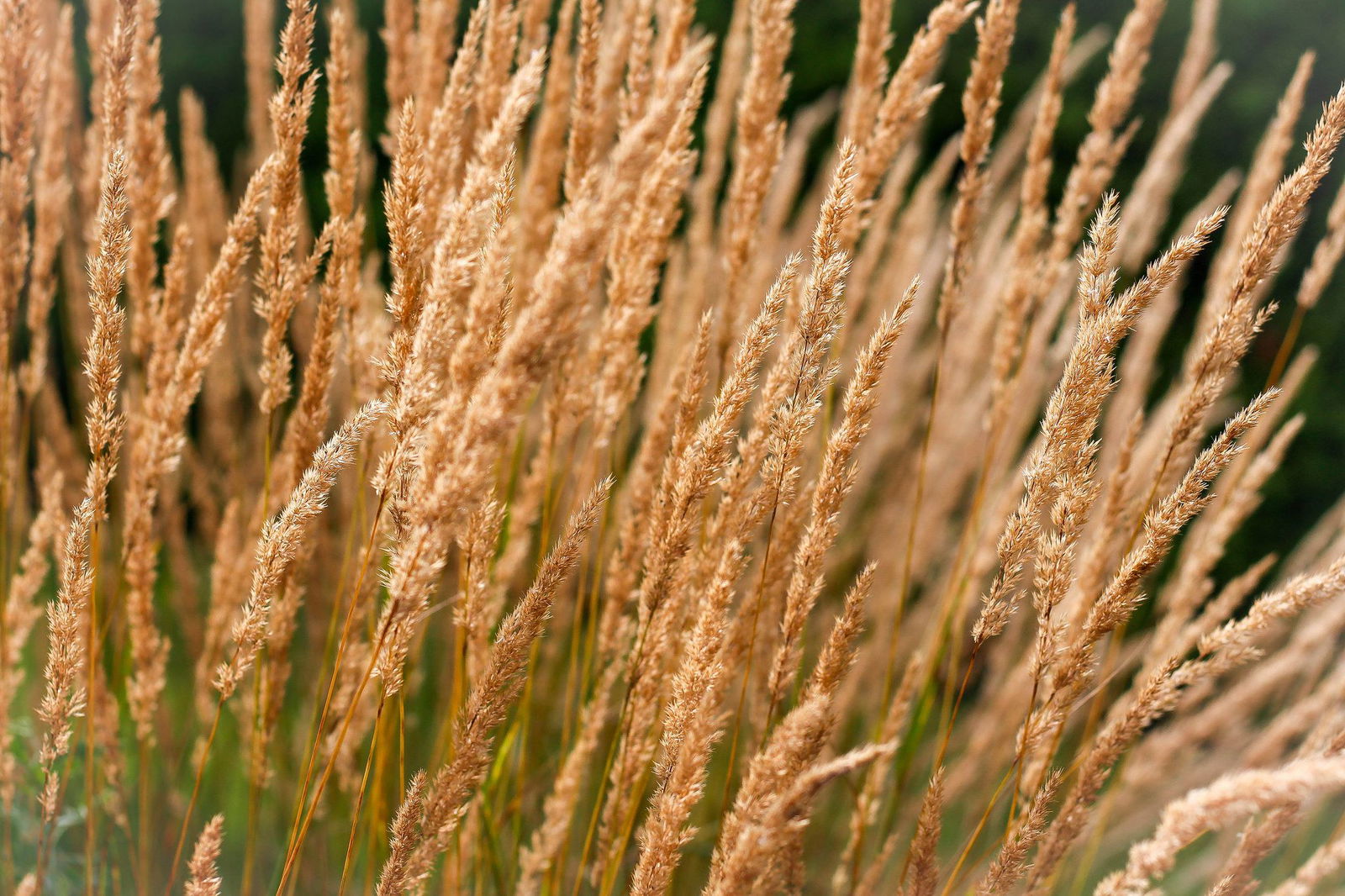
Wheat is one of the many bases that works for making vodka. Image: Flickr / Marco Verch
In terms of the fermentation and distillation steps of making vodka, all you really need to know is that the sugars taken from those grains, vegetables, or fruits is fed to yeast, which munches on the sugars producing a beer-like liquid — called "wash" — that contains C2H6O a.k.a. ethanol a.k.a booze that can get you wasted. But that liquid is very low alcohol by volume (ABV), something on the order of 7-15%, so it still needs to be distilled (a lot) in order to become vodka. As far as distillation is concerned, that's just the process of taking that wash, placing it in stills, and boiling it over and over to remove water, thusly upping the ABV of the vodka to something around 95%. (That 95% will drop down to around 40% when the ethanol is cut with water.) You should also know that vodka is a very common staple for any bar (unless it's a wine and beer bar or something weird like that), and should absolutely be in your home liquor cabinet. Too many drink recipes call for vodka to not have it on hand. But again, we're not talking about whiskey here — you don't need to go out and spend a ton of money on a bottle of vodka to use in mixed drinks, the cheaper stuff will usually suffice. Now that we have the basics of what vodka is, let's move onto where the heck this simple yet hardcore liquor comes from and how it's evolved throughout history.A BRIEF VODKA HISTORY
VODKA'S DISCOVERY: QUESTIONABLE ORIGINS As with most liquors, the origins of vodka are cloudy and contentious. Basically, both Russia and Poland claim that vodka was invented in their respective countries, but historical records, unfortunately, don't point to a solid answer. As the website In Your Pocket notes, "Vodka is a fascinating drink with a great history... [but the] truth is, there will never be a concise answer to whether vodka is a purely Polish or Russian creation, with so little in terms of documented evidence available of its origins. So scant is firm evidence that all too often fabricated 'facts' are often repeated across all mediums." Which basically means all we have to go on on this matter is biased opinions. So with that major caveat in mind, let's look at the dual stories offered by each country. POLAND Wikipedia notes that "The world's first written mention of the drink and of the word "vodka" was in 1405 from Akta Grodzkie recorder of deeds, in the court documents from the Palatinate of Sandomierz in Poland..." so that's definitely one point to Poland. Although at that time, vodka wasn't only being drunk, it was also being used as a medicine and a cosmetic cleanser — the drinkable version went by the name gorzałka and the medicinal version went by the name wódka. After that original recording of the word vodka in the 15th century in Poland, Polish vodka blends began to be introduced in the 16th and 17th centuries (these blends were known as Starka and Goldwasser, established in the 17th and 16th centuries respectively). Wikipedia notes that "Vodka production on a much larger scale began in Poland at the end of the 16th century..." but that "Early production methods were rudimentary [and that the] beverage was usually low-proof, and the distillation process had to be repeated several times (a three-stage distillation process was common)."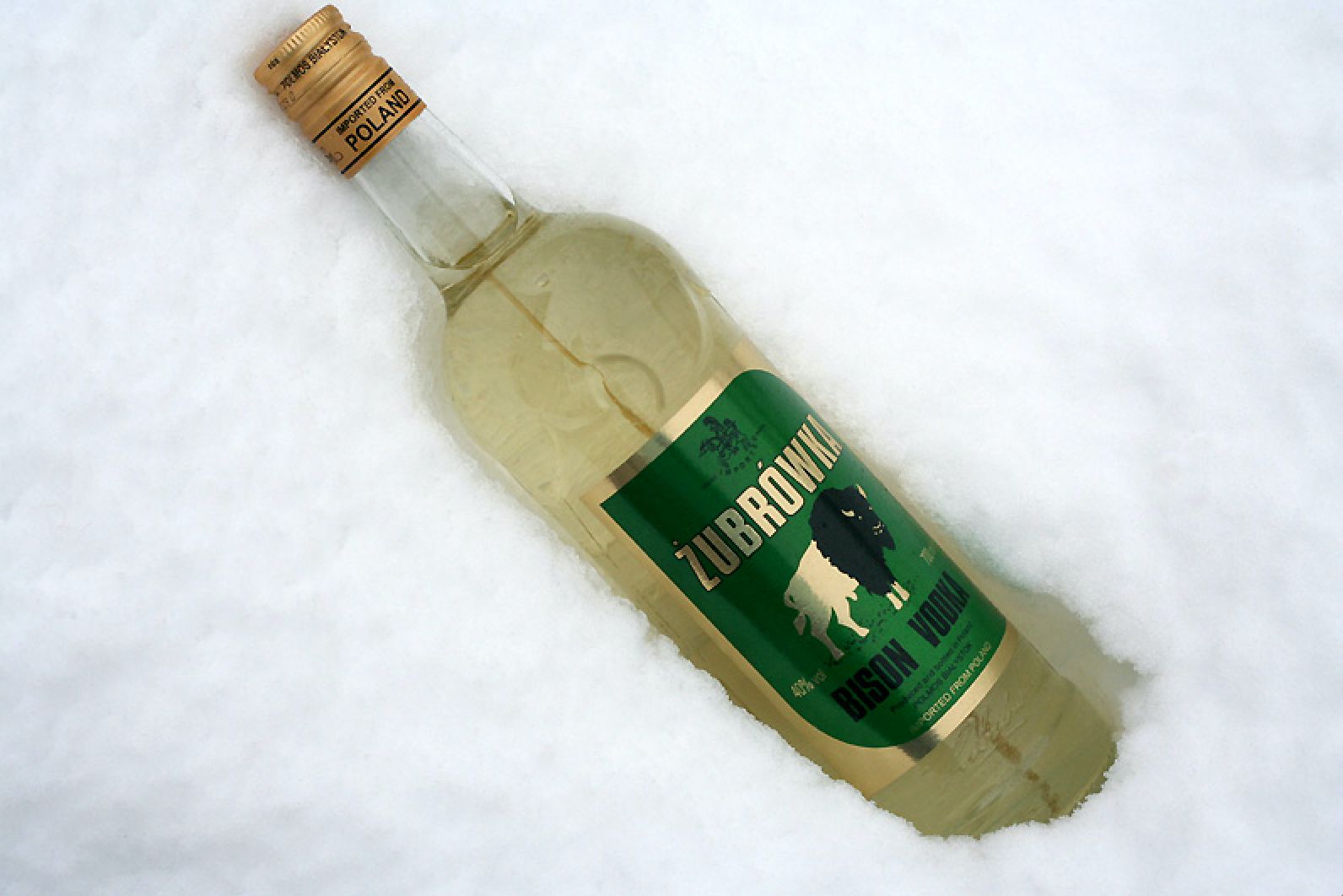
Żubrówka, a contemporary Polish, dry, herb-flavored vodka. Image: Flickr / « R☼Wεnα »
The end of the 18th century was when things really started to heat up for vodka. Although it was an established product in the 16th and 17th centuries, it wasn't until the 18th century that a real industrial vodka production effort began in Poland. The first industrial distillery was opened in 1782, and was soon followed by others. Thanks to the nobility and clergy making mad dollars off of the much-celebrated booze, it soon became a product that the masses had access to. In the 19th and 20th centuries, vodka production was refined, allowing for the production of clear vodkas. The first rectification distillery (a distillery that concentrates ethanol via repeated distillation) was established in 1871, and then, in 1925, the highly lucrative vodka industry was nationalized by the Polish government. After World War II, the vodka industry continued to be owned and run by the Polish government (which was at that time a Marxist-Leninist government). In terms of other highlights for vodka production in Poland in the 20th century, you'll pretty much just want to know that vodka was rationed in the 1980s (thanks to Martial law), and that the success of the Polish solidarity movement, which also took place in the 1980s, many distilleries either went bankrupt or were privatized, which led to the creation of a bunch of new brands of vodka. RUSSIA Alright, that was Poland, but what about the gigantic frosty bear in the room? Rossiya (Russia)? Well, according to Wikipedia, the word vodka first popped up in the Russian language in the late 14th century, which would have Poland beat on the establishment of the vocabulary by a good century. Wikipedia notes that "In 1386, the Genoese ambassadors brought the first aqua vitae ("the water of life") to Moscow and presented it to Grand Duke Dmitry Donskoy." But now you may be thinking, wait a minute, does that mean Italy was the first to invent vodka? No!
Grand Duke Dmitry Donskoy. Image: Flickr / Vasily Petrovich Vereshchagin
It wasn't until 1430 that that aqua vitae, which translates as "water of life," was actually made into a preliminary form of vodka as we know it today. (By the way, as a side note, keep in mind that aqua vitae is an archaic term for alcohol, and in the case of the booze brought by the Genoese, that basically meant fermented wine.) It was during this year that a monk named Isidore made the first recipe for vodka, which included distillation devices and thusly a higher ABV content for the booze brought over by the Italians. Wikipedia goes on to note that "Until the mid-18th century, the drink remained relatively low in alcohol content, not exceeding 40% ABV. Multiple terms for the drink were recorded, sometimes reflecting different levels of quality, alcohol concentration, filtering, and the number of distillations..." and that vodka was referred to as "burning wine," "bread wine," or even simply "wine," during this period. By the second half of the 19th century, the Russian government had developed a policy of promoting state-made vodka, making it the drink of choice for a good portion of Russia. This ubiquitous consumption of vodka was further aided in 1863 when the government's monopoly on vodka was repealed, causing prices to drop and low-income markets to open up. By 1911, vodka accounted for ~ 89% ~ of Russia's alcohol consumption. https://giphy.com/embed/885wPvywQLPuE Fast-forwarding to 20th century Russia and you get a lot of turmoil, mortality, and even international politics influenced by vodka. Stalin, for example, utilized vodka in order to develop a friendship with Winston Churchill during WWII. It literally helped to bridge the gap between the two countries and develop the two as an allied force. But despite vodka's ability to bring people together, it was also making people really sick. According to All That's Interesting, the heavy use of vodka by the Russian population saw the average age of death for men drop significantly. Eventually, in the '80s, Mikhail Gorbachev (the last leader of the Soviet Union) decided to do something about it. He forced distilleries to produce fruit juice and mineral water instead of vodka, which did indeed help to increase the health and average age of death for the Russian population. Unfortunately, as is usually the case with any kind of prohibitions, a black market developed, and government revenue plummeted (the Russian government was still getting a good portion of its revenue from vodka sales).
Mikhail Gorbachev tried to curb the damage vodka does to the Russian population. Flickr / Veni
In contemporary times, Russian President Vladimir Putin has also tried similar strategies as Gorbachev to try and curb the health impacts of vodka. All That's Interesting notes that "In response, Putin introduced alcohol policy reforms in 2006 that imposed tighter regulations on the production and sale of alcohol. While changing tastes and economic fluctuations may have also had a major hand in lowering the Russians’ appreciation for vodka, Putin’s regulations may have worked: Vodka consumption fell by a third and lowered the risk of death before 55 as well." Then, in 2009, Putin continued to put more restrictive measures in place in order to mitigate the negative effects that vodka was having on the general population. But now, with oil sales potentially threatened by the changing climate of energy markets, it may be time once again to turn the vodka taps back on fully in order to earn some much-needed revenue for the government. VODKA IN AMERICA (THE MOSCOW MULE AS A TROJAN HORSE) Now that we know all about vodka's history in Poland and Russia, what about the clear spirit's history in the U.S.? How exactly did vodka go from unknown liquor to one of the most drunk alcoholic beverages across the nation? It's a long story — that we'll shorten here — and it begins with the end of Prohibition. And then the end of WWII.... Author of the book Vodka: How a Colorless, Odorless, Flavorless Spirit Conquered America, Vic Matus, told The Federalist that the rise of vodka in the U.S. came in part because Prohibition ended and people we're inexperienced with alcohol, and thusly ready to try new things. "When the ban ended in 1934, you saw a whole new bar crowd—a young group of drinkers that didn’t care at all for flavor or character...." Matus added that "They just wanted to get that buzz. Think about it: If you were 18 when Prohibition ended, that means you were 4 when it began. You basically have no drinking knowledge, no speakeasy experience. Suddenly it’s all for the taking." That whole "no drinking knowledge thing" led to vodka slipping into the normal range of liquors consumed by Americans, in part because it tasted so good in drinks like the Bloody Mary and Screwdriver. But even though vodka had its introduction in the U.S. after Prohibition, it wasn't until after WWII that the spirit really took off in popularity.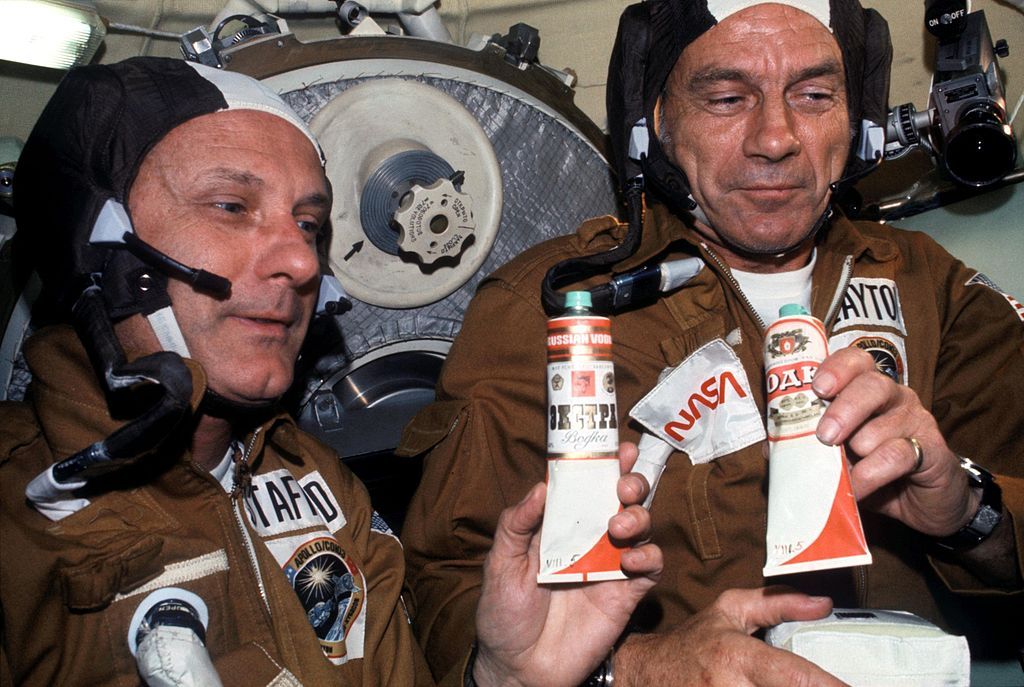
U.S. astronauts holding Russian vodka in the 1970s. Image: Wikimedia / NASA
Boise Weekly notes that "vodka's popularity in America was in the short-lived post-war glow of friendship between Russia and the United States after WW II. With a little help from marketing geniuses at Smirnoff, vodka began its rise to prominence as America's favorite spirit...." The same article points out that this was due, in large part, to the fact that the Smirnoff vodka brand — owned by Russian oligarch Vladimir Smirnov, then sold to American businessman Rudolph Kunnett — capitalized on America's new (yet short lived) relationship with Russia. Kunnet put together a national campaign to advertise his vodka brand, and did so by popularizing the Moscow Mule cocktail, as well a slogan that stated vodka "leaves you breathless." This whole "breathless" thing was a reference to the fact that vodka is harder to smell on one's breath versus other liquors, which meant it was easier to drink in various situations and get away with it. In the coming years, Smirnoff would also use celebrity endorsements from people like Woody Allen, Zsa Zsa Gabor, and Groucho Marx to grow the brand.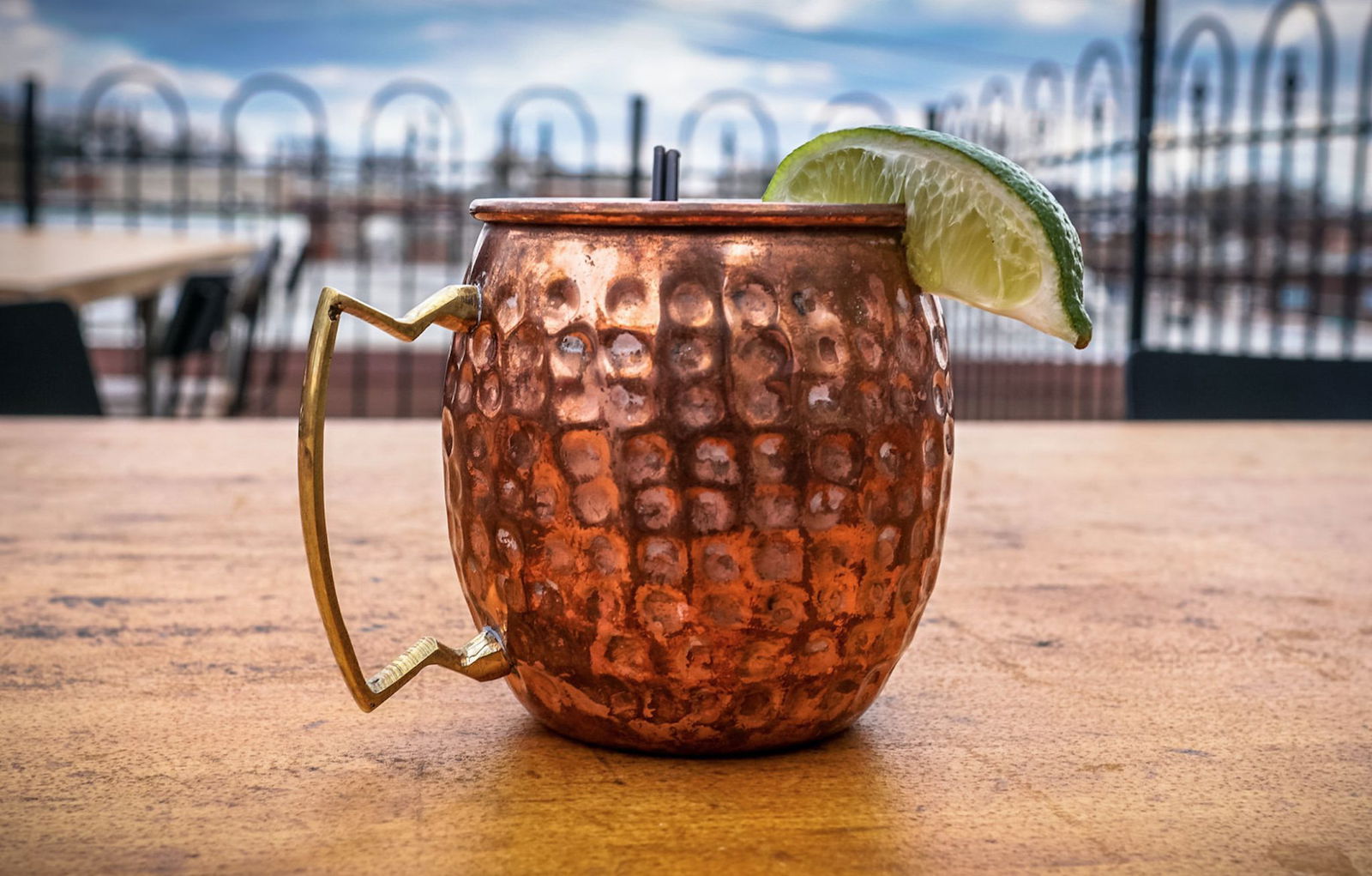
A Moscow Mule in its signature copper mug. Image: Flickr / Ted Eytan
But vodka still wasn't quite as popular as other liquors in the U.S. That wouldn't happen until the 1960s, when Sean Connery famously ordered his Smirnoff vodka martini in the MGM film, Dr. No. Once people saw Mr. Bond order a vodka drink, the little boozy Russian infiltrator took off like never before. Now, in contemporary America, vodka dominates the liquor market, with 2016 U.S. sales (via Park Street analytics) being broken up as follows: 7% tequila, 25% whiskey, 6% brandy, 5% gin, 11% rum, and (drum roll please) 34% vodka. Also, 12% goes to other types of hard liquor, but vodka is still the overwhelming majority of the market. This may change in the coming years with the rise in interest amongst millennials in premium whiskeys and tequilas, but for now, vodka is king. VODKA ACROSS THE GLOBE IN THE 21st CENTURY As mentioned earlier, things are looking pretty bright for vodka in the 21st century. Not only does vodka have a dominant share of the liquor market, its sales are also rising, with Statista projecting an increase in North America to go from $1.43 billion in 2018 to $1.56 billion in 2021. Per Jacobsson, CEO and director of global sales at DQ Vodka also told the Spirits Business that he expects vodka (or at least his brand) to expand out into India, China, South Africa, and the Middle East over the next couple of years, which will mean massive new markets, and, very likely, a lot more growth in sales. https://giphy.com/embed/zjbVNktFMtVg4 Although, of it should be noted that not every aspect of the vodka industry looks bright in the 21st century. Thanks to the aforementioned restrictions placed on vodka by Vladimir Putin in Russia, sales have declined in one of the spirit's biggest markets (surprisingly the American market beats out the Russian market). Veniamin Grabar, president of Ladoga vodka, told the Spirits Business that there is an issue with "deep discounting" of vodka, which has become a global issue. He even points out that a huge portion of vodka sold to the masses is actually sold at a loss. But the vodka market is still growing, and it still seems to slot in nicely as a cheaper option than the premium tequilas and whiskeys catching on with younger generations. Also, there's still no liquor that can compete with vodka's versatility in mixed drinks, so it seems incredibly unlikely that you'll see the amount of vodka bottles on bar shelves diminishing any time soon. THE VODKA BELT One more side note before you wrap up with the history of vodka, and that is knowing what the term "Vodka Belt" means, 'cause it may come up. Basically, the Vodka Belt is a group of European countries that have large vodka production and consumption markets. The Vodka Belt includes: Belaruse, Estonia, Finland, Iceland, Latvia, Lithuania, Norway, Poland, Russia, Sweden and the Ukraine.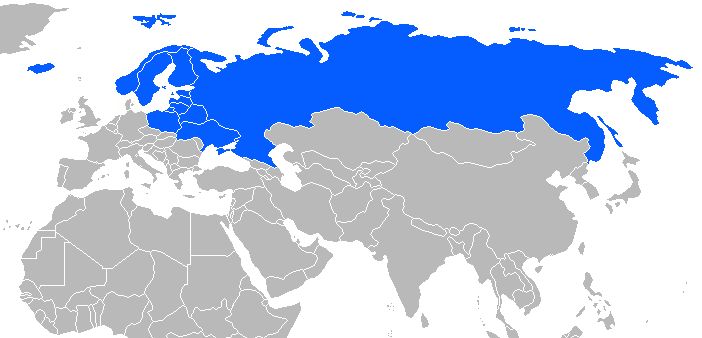
The geographical area known as the "Vodka Belt." Image: Wikimedia / Itinerant1
HOW VODKA IS MADE
OK, now that we know all about what vodka is as well as its history, it's time to dive into how vodka is actually made. And luckily for you (and really for all of us), this procedure is relatively simple compared to the others. Now let's dive in! (Shoutout to wikiHow for putting together one hella-boss tutorial on how vodka is made.) CREATING THE MASH First thing you need to make vodka is the organic material from which you're going to derive your sugars. As mentioned, these organic materials are really wide ranging for vodka, and include everything from rye to wheat to potatoes to corn to rice to grapes to apples. (If you're wondering, wheat is the most common starter organic material for making vodka.)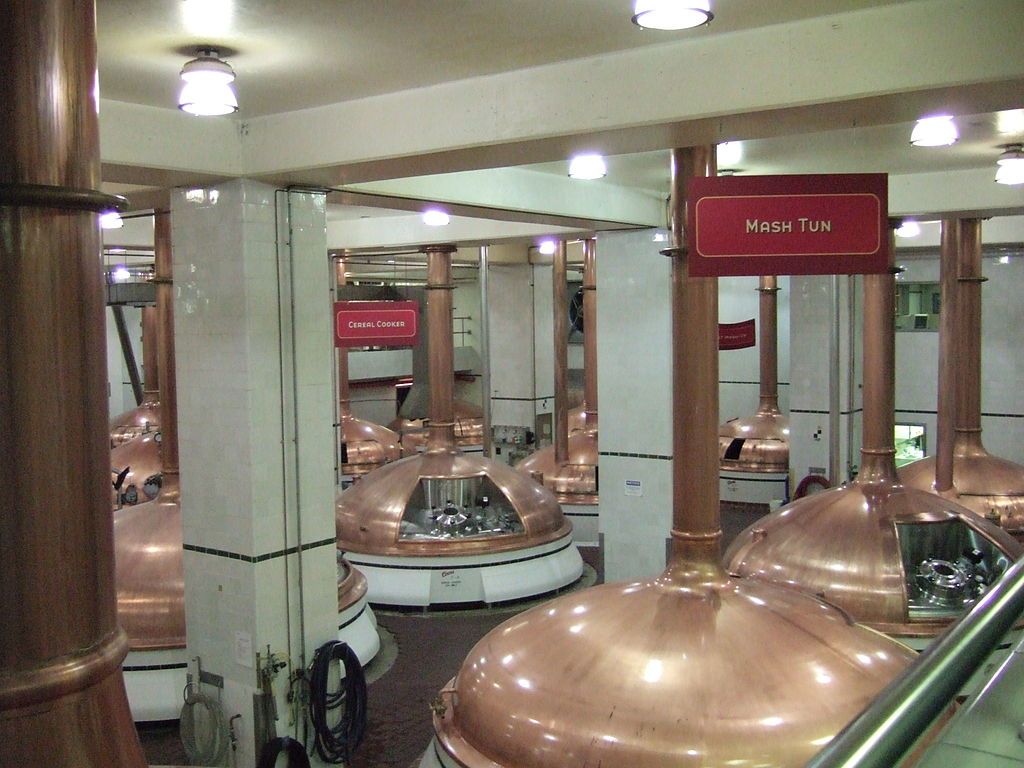
Mash tuns — these are used for beer but are very similar to those used for vodka. Image: Wikimedia / Sdjake
Once you've collected your base ingredients, it's time to throw them into a mash tun, which is basically a giant enclosed steel pot that has a motorized mixer inside of it. What's going to happen here is you pour your ingredients in — let's say it's just wheat for the sake of simplicity — and then add warm water and (sometimes) additional enzymes. Once you have your ingredients, warm water, and enzymes in the mash tun, the enzymes (molecular catalysts) will start to break down the starches (little glucose energy storage molecules) into fermentable sugars. Side note: This stage also sees the mash brought to a boiling point in order to sterilize it. VODKA FERMENTATION Now that you've broken down the starches in your wheat into liquid containing fermentable sugars, you're ready to strain said liquid and then feed it to yeast — yeast is a single-celled fungus. This happens in massive, sanitized steel containers, at least when it comes to industrial producers, and takes about 2-4 days. Once you have the wash in the containers along with the yeast, the yeast will start munching on the sugars and producing ethanol as well as some other byproducts such as CO2 and various flavor compounds. And bang, you have yourself an alcoholic liquid. Recall that this liquid is called the "wash."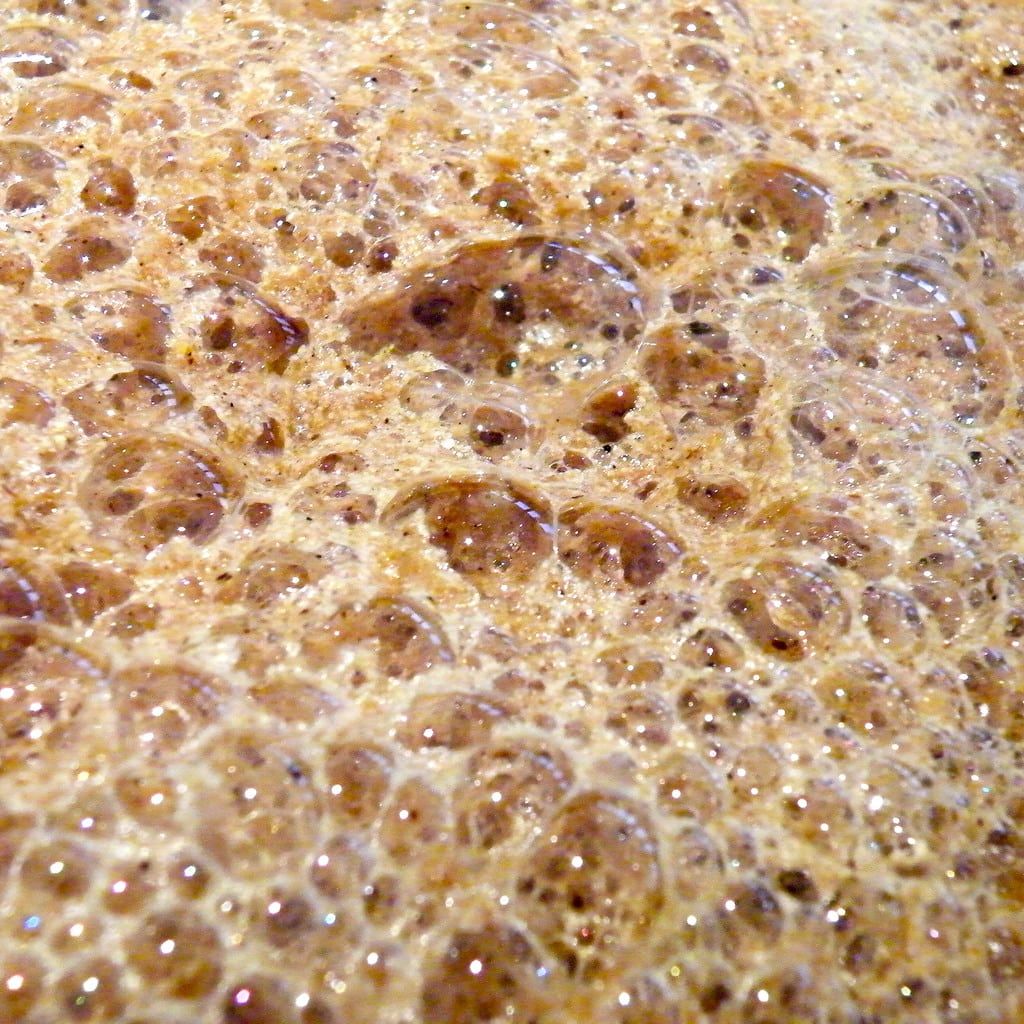
This is what it looks like when yeast is turning sugars into ethanol (alcohol). Image: Flickr / barockschloss
But even though you now have a liquid containing alcohol, it's still a very low ABV alcoholic liquid — something on the order of 7-15%. To turn this low ABV liquid into vodka, you're going to need to distill it. VODKA DISTILLATION OK so you have your boozy wash, now it's time to (way) up that ABV percentage. And this is going to require a process known as distillation. [Taken from the Ultimate Rum Guide] The distillation process, in general, is pretty simple: What you’ll need to do is take your wash, place it in the bellies of stills — a still is basically a very large copper pot with a long neck — so that the ethanol and the water in the wash can be separated. This happens by lighting a fire underneath the belly of the still, which sends the ethanol racing up the long necks of the stills, where it’s collected from openings at the other end of the long necks. The reason that mostly ethanol vapor races up the necks of the stills and most of the water stays in the bottoms is because of the differing boiling points of the two liquids — ethanol has a lower point of 173.1 degrees Fahrenheit, while water has a boiling point of 212 degrees Fahrenheit. This distillation process is then usually repeated in order to up the ABV even further.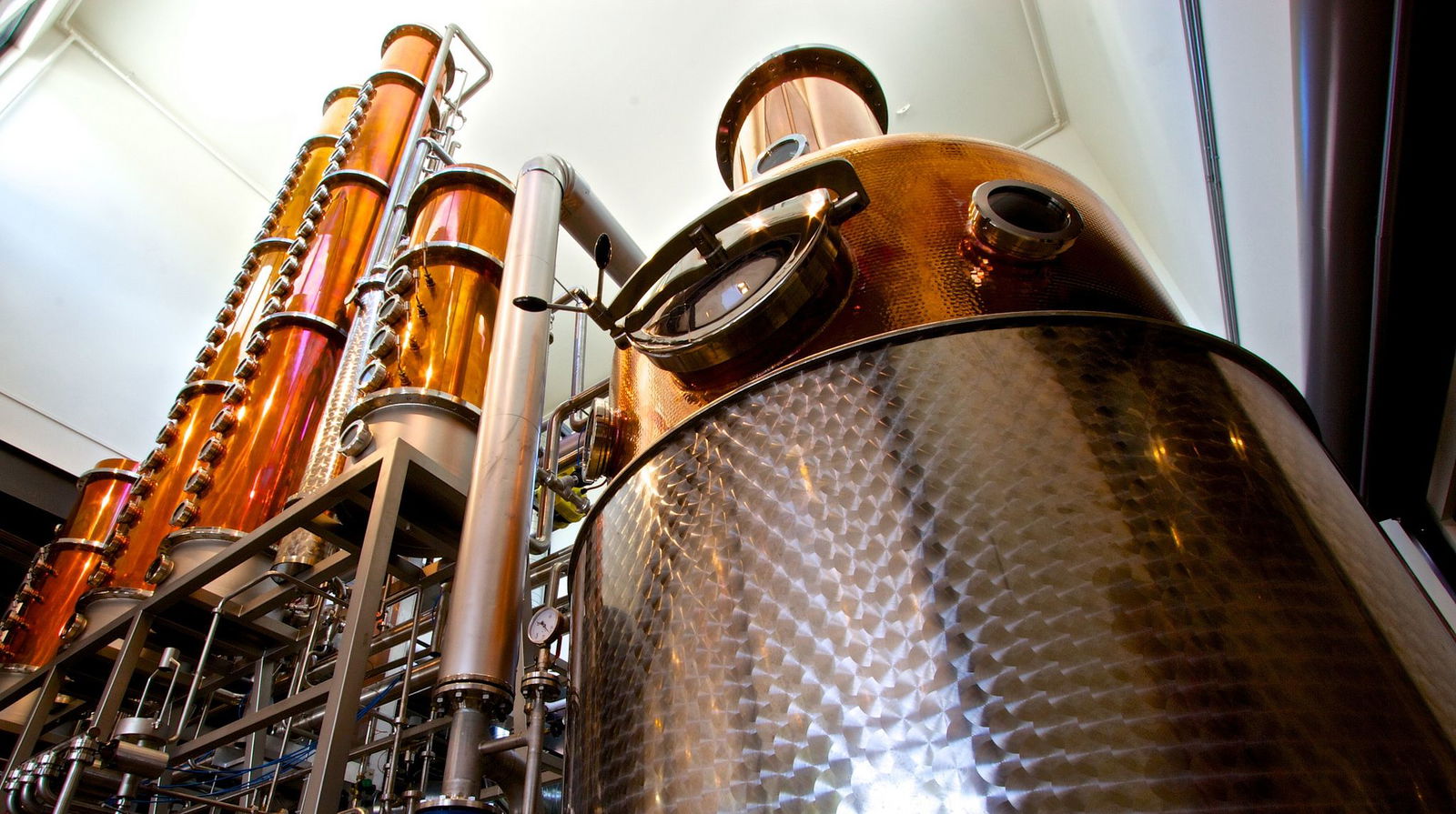
A column (or continuous) still. Image: Flickr / Colorado Distillers Festival
In terms of what's unique to the vodka distillation process, that's all about using multiple column stills (which can distill the vodka up to 34 times in some extremely rare cases) that will repeatedly distill the wash until its ABV percentage is on the order of 95%. (Note that other types of stills aside from column stills can be used to distill vodka, although column stills are the most commonly used for large-scale, industrial purposes.) Side note: Usually the "heads" and "tails" of this high ABV vodka are removed before the next step. The heads and tails are the parts of the distilled liquid that are at the bottom and top of a finished batch. ADDING WATER/FILTERING/FLAVORING THE VODKA Adding water Alright, you have yourself some distilled vodka with a very high ABV percentage, now what? We'll tell you now what! Now you need to cut down on that ABV by diluting your vodka with clean, fresh water. This will bring the ABV percentage of the vodka from a seriously overwhelming 95% down to a much more reasonable 40% (roughly that is; different vodkas have different ABVs). Filtering But watering down the vodka isn't always the last step before bottling. Often times the watered-down vodka will also be filtered. This filtering process is aimed at removing impurities from the vodka, and can be accomplished using various materials including activated charcoal (which is most commonly used), lava rock beds, coconuts, or even quartz crystals. The filtering doesn't only remove impurities from the vodka, however; it also changes the texture, and thusly the mouth feel of the vodka. As Liquor.com notes, "a filter can impact the texture of vodka, resulting in a thinner feel (from being extra-filtered), heavier and thicker (almost creamier, possibly a result of using a metal filter) and in between (standard charcoal filter)."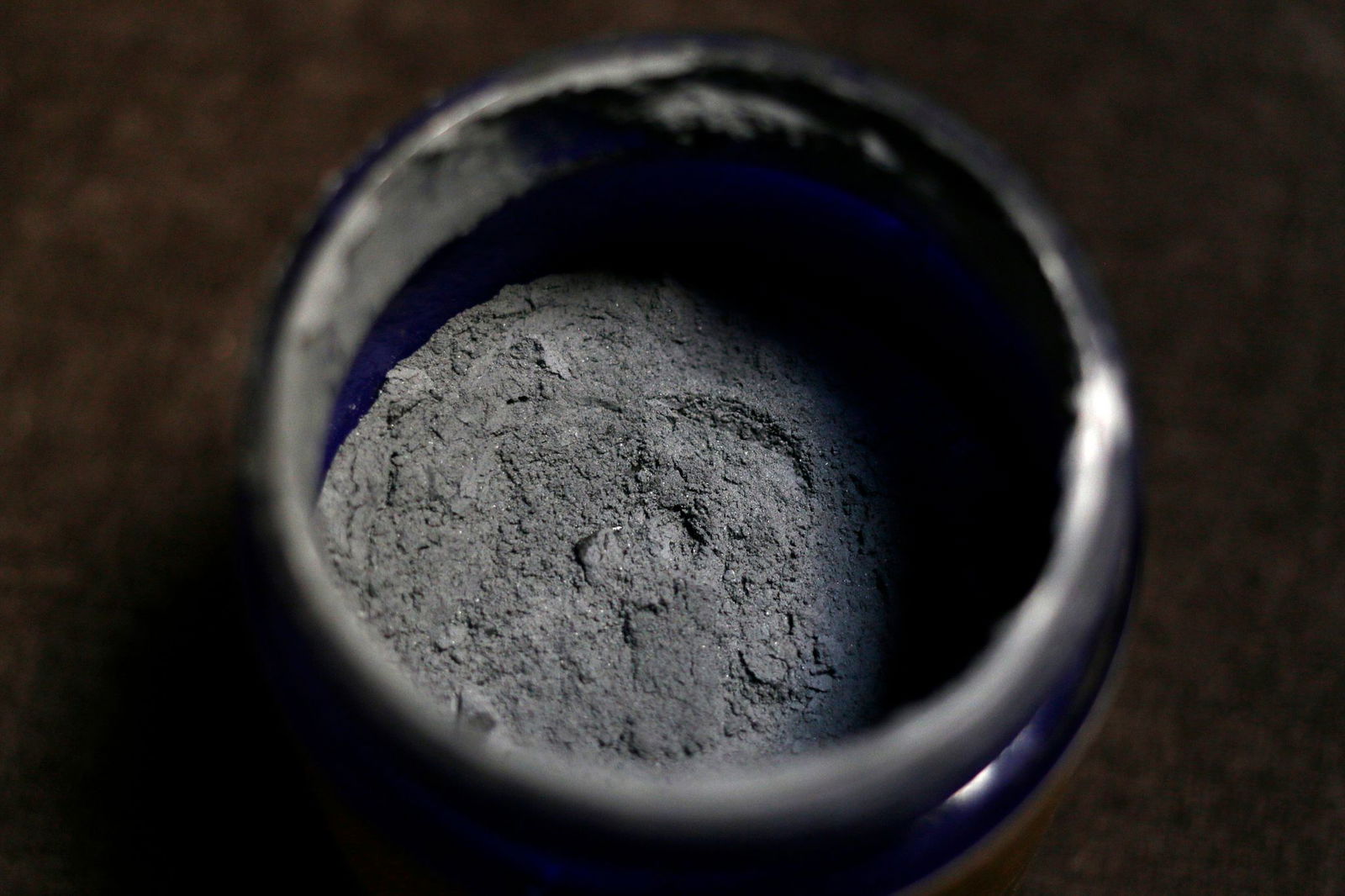
Activated charcoal. Image: Flickr / WILL POWER
IMPORTANT FILTERING SIDE NOTE: People, it may sound too good to be true, but you can turn a cheap-tasting vodka into a much cleaner, smoother vodka just by running it through your water filter at home. Seriously, take some cheap vodka and try filtering it about six times through your Brita filter — you'll thank us. Flavoring One final step that some vodkas — the ones that are going to become flavored vodkas (duh) — undergo is flavoring. And depending on the vodka distillery, this can happen in a few different ways. Some vodka distilleries will simply add flavor extracts or chemical blends to their vodkas, while others will actually steep fruit or other flavorful ingredients in their vodka. As Chowhound notes, most vodka producers will use some kind of flavor extract or chemical blend, although there are a few exceptions, such as Hangar 1, which will indeed steep fruit in the vodka. Regardless of the method of flavoring the vodka, your end product will be a flavored that vodka that will be a bit more palatable than normal vodka, but nearly as versatile. Some of the flavors infused into vodka are red pepper, ginger, green apple, cherry, watermelon, vanilla, chocolate, honey, and cinnamon. BOTTLING THE VODKA We finally have our fermented, distilled, filtered, and possibly flavored vodka, so now it's time to bottle up this beautiful clear booze! And what do you need to do that? Some glass bottles, some tops, some labels, and bang, you're good to go! Seriously though, you better use glass bottles because, as MadeHow notes, "[o]ther receptacles, such as plastic, would cause a chemical change in the beverage."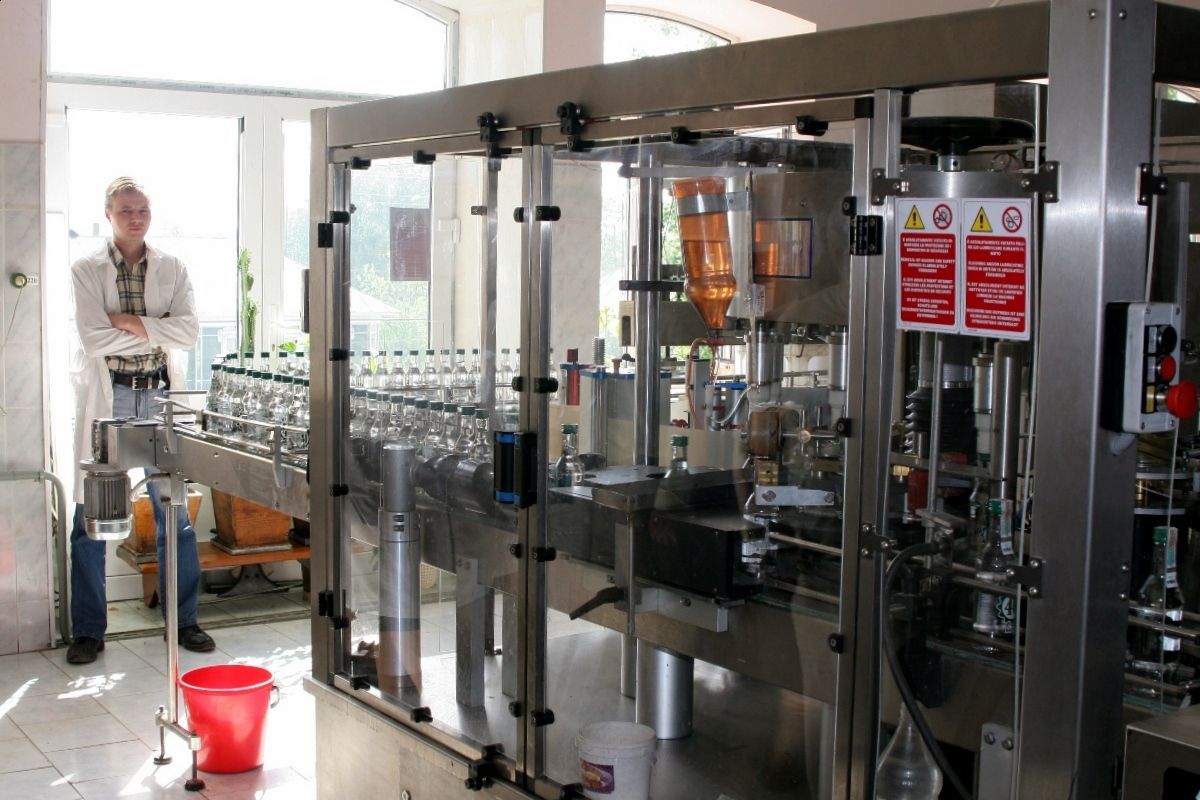
One example of a vodka bottling machine. Image: Wikimedia / Robert Lawton
In terms of the labeling and nomenclature and all that, we're going to cover that in the very next section!THE DIFFERENT CATEGORIES/TYPES OF VODKA
Ama-tenders, you have the history of vodka, how to make vodka, and the definition of vodka all down pat now, which means it's time to master all the different categories. But again, lucky for you, there aren't too many. In fact, in the most general sense, vodka breaks down into only two categories: Vodka and flavored vodka. Although there are some caveats here, which we'll dive into below. VODKA Vodka is exactly what it sounds like: vodka that has been distilled, cut with water, and then bottled. Seriously, like Mother Russia, this sh*t is real simple and real efficient. Even the U.S. government defines vodka simply as an ethyl alcohol "without distinctive character, aroma, taste, or color." So yeah, plain vodka is BASIC. But that doesn't mean that there aren't any subcategories to think about. In fact, craft vodka expert Florian Renschin has broken down vodka into its regional categories in response to a Quora question, and we've decided to list them for you below. (Needless to say, massive shoutout to Renschin for putting together such a detailed list.)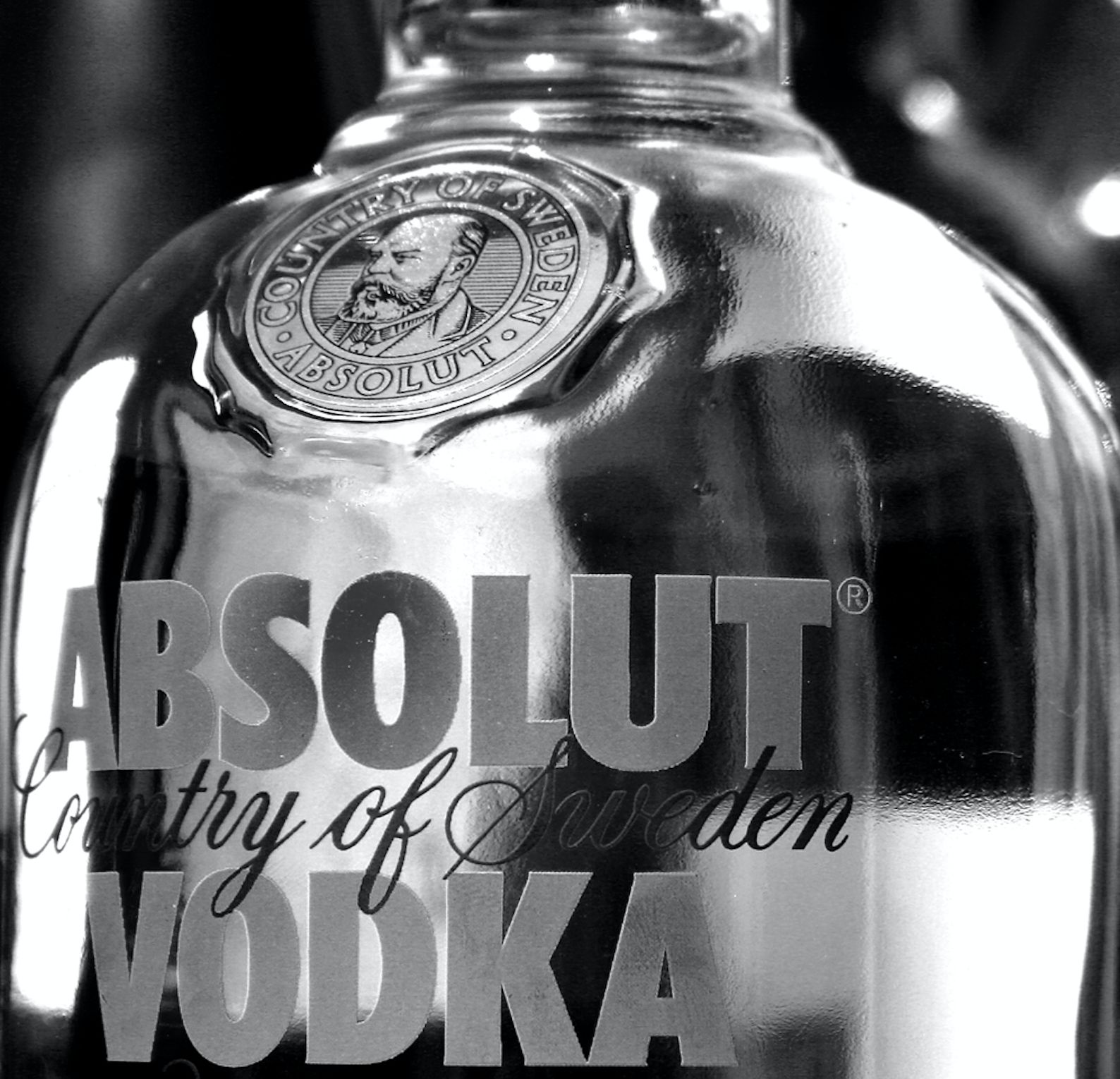 Absolut Vodka, a Swedish vodka that stands as a perfect example of classic, non-flavored vodka. Image: Flickr / Andrew Cheal
Absolut Vodka, a Swedish vodka that stands as a perfect example of classic, non-flavored vodka. Image: Flickr / Andrew Cheal
Industrial (or Continuous) - Large, industrial vodka production almost always uses numerous column stills in succession in order to distill their vodka several times through. Renschin points out that this method of vodka production usually results in "a homogenous neutral multi-purpose spirit [that's] usually very neutral in taste." So if you think about industrial efforts for creating vodka, think multiple column stills linked together, and a final product that is clean, clear, crisp, and yeah, pretty much flavorless.
Artisanal (or Batch) - Artisanal vodka is, as its name implies, a vodka that is made in a more artful manner than its industrial counterpart. Renschin points out that "The alcohol is manufactured by one distiller from field to bottle, where he is in charge of every single step." The fact that artisanal vodka is usually controlled by either a single individual or a small group of people means that it's usually infused with a lot more effort and care — artisanal is all about quality, not quantity. You also tend to get a lot more flexibility with the types of stills that can be used (bust out with those pot stills, people!), as well as more experimentation with flavoring. Remember that that whole fermentation process does indeed produce flavor compounds, all of which don't necessarily have to be removed by the distillation process.
Western Style Vodka - Vodka that tends to be more neutral in taste.
Eastern Style Vodka - Vodka that tends to be more flavorful; fewer of the flavor compounds have been removed. Although note that this doesn't mean that any flavor elements have been added. Pure Neutral Western - Vodka made from industrial continuous stills that don't have much character, color, or taste. Pure Classic Eastern - Vodka that's been made in a similar style to the pure neutral western vodka, but with a bit more flavor (thanks to more flavor compounds being left in during the distillation process). Side note: It should also be noted that often times vodka connoisseurs like to categorize vodka based on the region of production. For example, Facts and Details notes that lighter ethyl vodkas are often produced in Sweden and the U.S. (with brands like Absolut and Smirnoff coming out of each respective country). The same site also notes that medium-bodied vodkas often come out of Finland and Iceland, and robust vodkas from Russia and Poland. FLAVORED VODKA As mentioned, flavored vodka is simply vodka that's had flavor extracts or chemical blends added to it in order to give it a certain flavor — anything from watermelon to vanilla to honey to cinnamon (again, as mentioned). Some vodka distillers — most often craft distillers who take a bit more pride in their product — will actually steep fruit in their vodka to flavor it with the real deal. Hangar 1 Vodka, for example, steeps some of their flavored vodkas in fresh fruit ranging from Kaffir lime to Buddha's Hand Citron.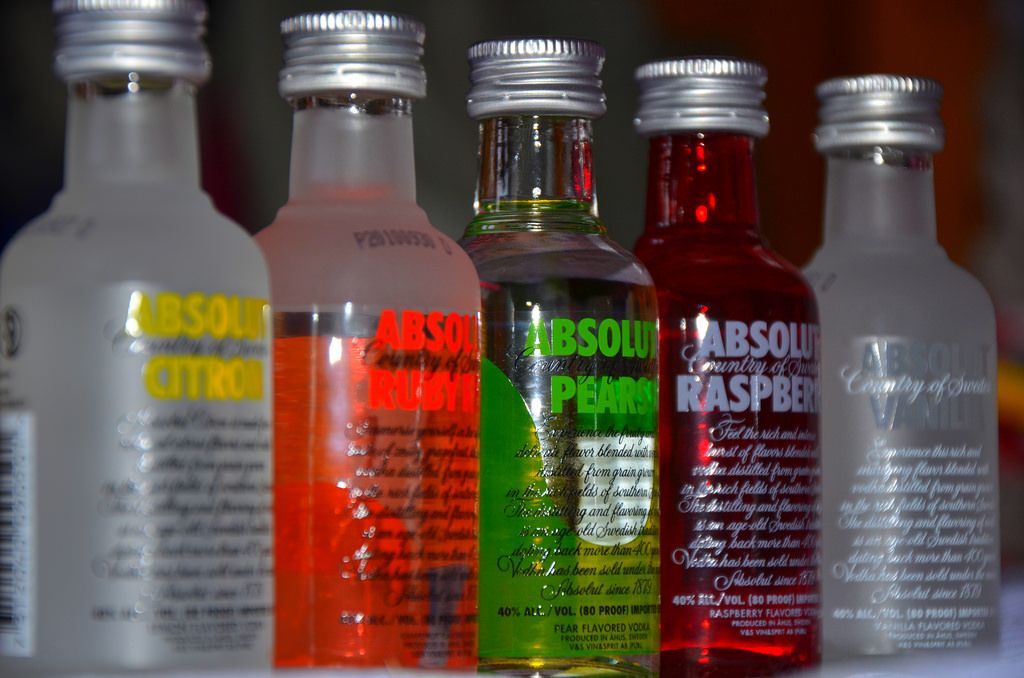
Some examples of flavored vodka. Image: Flickr / Ben Sutherland
Some of the most popular flavors to add to vodka are vanilla, melon, coconut, orange, cucumber, chocolate, and basil. (This list was assembled based on a cross-section of multiple "top selling" flavored vodka articles, in case you're wondering! ) BATHTUB (OR BLACK MARKET) VODKA Finally we have a category of vodka that really shouldn't exist, but, unfortunately, does anyway. And that category is bathtub — or black market — vodka. As Wikipedia notes, "In some countries, black-market or 'bathtub' vodka is widespread because it can be produced easily and avoid taxation. However, severe poisoning, blindness, or death can occur as a result of dangerous industrial ethanol substitutes being added by black-market producers." Some of the best vodka brands include: Belvedere Vodka ($55), Hangar 1 Vodka ($20), Tito's Handmade Vodka ($20), Smirnoff (if you're looking for something bargain bin priced, 'cause this is $10), Grey Goose Vodka ($48), Circo Vodka ($22), Ketel One Vodka ($38), and Svedka Vodka ($22). (Shoutout to Best Products for putting together such an awesome list of vodkas.) Some of the best flavored vodka brands include: St. George California Citrus Vodka ($29), Grey Goose Le Poire ($30), Crop Organic Meyer Lemon ($25), 360 Double Chocolate Vodka ($14), Dr. Stoner's Fresh Herb Vodka ($30), Square One Basil ($35), and Heritage D's Seasoned Vodka ($28). (Shoutout to Supercall for putting together such an awesome list of flavored vodkas.)HOW TO DRINK VODKA
Time for the fun part, people — actually sitting down and drinking some dang vodka. But you have to hold your horses (or bears or whatever animal can survive the frigid Russian tundra) for just one more moment 'cause we need to make sure you're not trippin' while you're sippin'. Here before you we have the top tips on how to drink vodka like a genuine pro, so check them out before you start drinking if you want to look like you know what you're doing. USE THEM SMOL GLASSES First off, if you want to drink vodka in a genuine Russian manner, you need to refrain from the martinis and cosmos and even the Moscow Mules, 'cause the Russkies just drink this stuff straight. Straight and out of small shot glasses.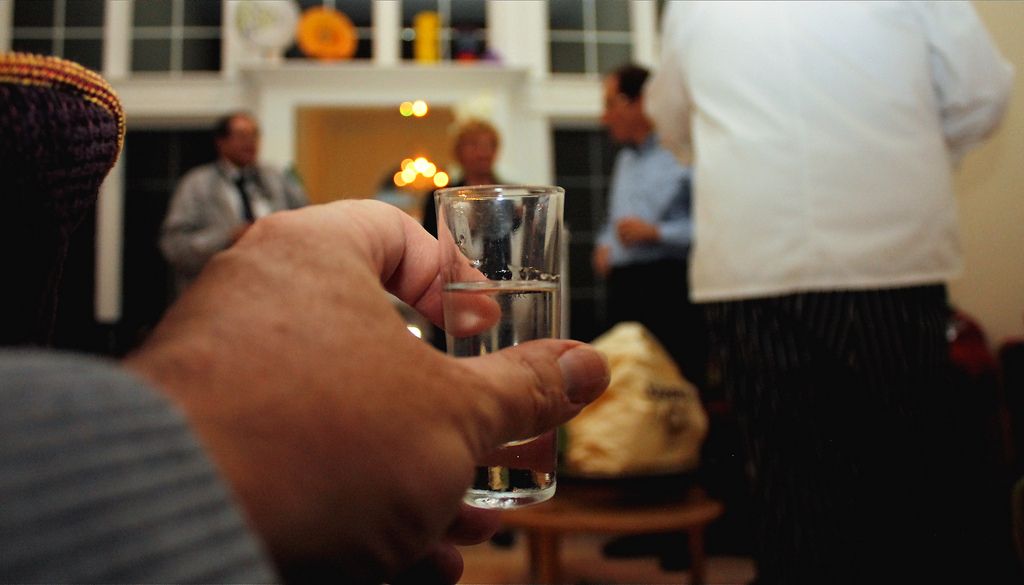
A shot glass half-full of vodka; this is the max amount you want in the glass. Image: Flickr / Phil Roeder
Vodka expert Israel Morales told Liquor.com that "Tiny one-ounce shot glasses are best for vodka" and notes that small shots are ideal because they allow drinkers to manage their buzz. Small shot glasses of vodka are also preferred because they allow folks to continuously cheer to whatever the occasion may be again and again and again. (We'll get more into this celebratory aspect of vodka below.) MAKE IT VISCOUS Chill your vodka in the freezer, people! At least for a few hours anyway, as that will help to make it a bit more viscous than normal. Multiple sources, including Esquire, Atlas Obscura, and the aforementioned Liquor.com articles all highlight the fact that not only do Russians drink their vodka ice-cold, but that that's actually the way to get the best taste out of the booze. Although "best taste" is a relative phrase here, 'cause again, we're talking about a liquor that is, by definition, flavorless. EAT WHILE YOU DRINK Here's some really good news, and something that is seemingly unique to vodka: to drink it right, you need to drink it while you're also eating something. But not just any food will do. If you're looking to really do it up like the Russians do, you'll want to go with classic Russian dishes. Atlas Obscura notes that "There are many traditional food accompaniments to vodka, sometimes referred to as zakuski..." and that these foods are generally snack foods such as pickled vegetables, cold meats, cabbage, cured fish, and open-faced sandwiches. toWe're going to go ahead and guess that these snacks either sound delicious or horrific to you depending on your palate. Either way, to drink like a vodka pro, this is the way to go.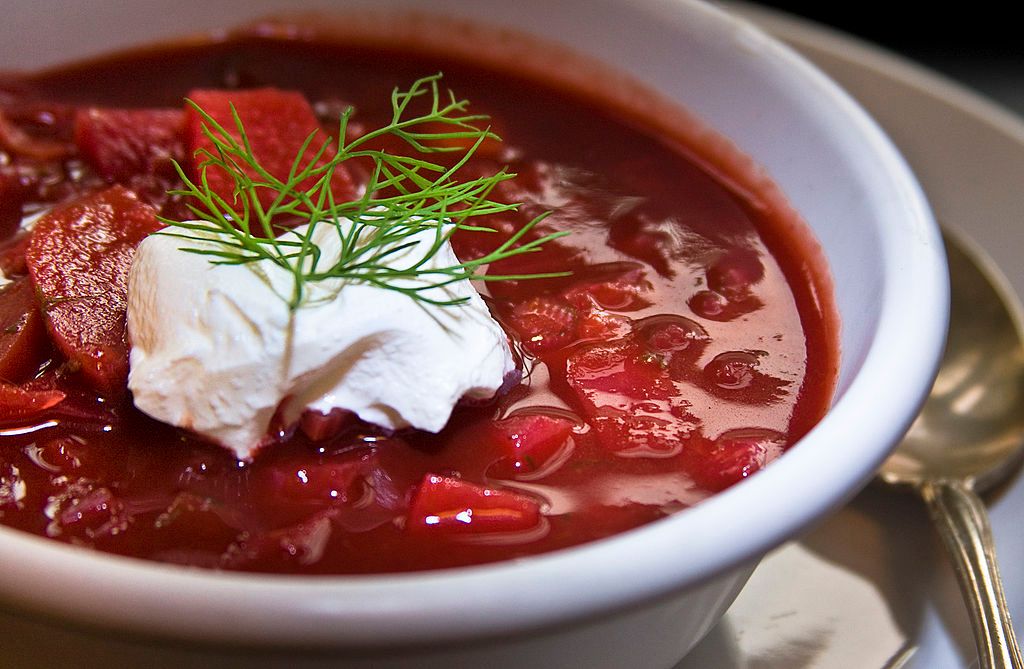
Borscht is a classic Russian dish that's often eaten with vodka. Image: Wikimedia / Liz West
DRINK WITH YOUR COMRADES Another crucial aspect of drinking vodka like a traditionalist is to drink it with friends! There isn't much more to say here, just gather your friends and do some drinking. And if you don't have friends, then buy a bottle of vodka and make some, dang it! Tell 'em you'll give them a full-on detailed education on this fine spirit. DRINK TO SOMETHING! Finally, and perhaps most importantly, you need to show some gratitude for something — anything! — when you're drinking vodka. No matter what kind of good news you're celebrating, whether it be a wedding, a promotion or the arrival of your Instacart groceries, you need to cheer to it. You never just invite somebody over to drink vodka, you always have a celebratory reason to drink vodka. https://giphy.com/embed/g9582DNuQppxCSOME OF THE MOST POPULAR VODKA DRINK RECIPES
1. MOSCOW MULE 2 oz. (60ml) Vodka 4 oz (120ml) Ginger Beer 1/2 oz. (715ml) Lime Juice Garnish: Lime Wheel/Mint PREPARATION 1. Add ice to copper mug and pour over vodka and lime juice. Stir. 2. Top with ginger beer and garnish with a lime wheel and mint sprig. 2. COSMOPOLITAN 1 1/2 oz. (45ml) Citrus Vodka 3/4 oz. (22ml) Triple Sec 1/2 oz. (15ml) Lime Juice 1 oz. (30ml) Cranberry Juice Garnish: Lime Peel PREPARATION 1. In an ice filled glass combine citrus vodka, triple sec, lime juice and cranberry juice. Shake well. 2. Strain mix into martini glass and garnish with lime peel. 3. WHITE RUSSIAN 1 3/4 oz. (52ml) Vodka 3/4 oz. (22ml) Coffee Liqueur 1 oz. (30ml) Fresh Cream PREPARATION 1. Add ice to serving glass and pour over vodka and coffee liqueur. 2. Float cream on top and stir gently. 4. BLOODY MARY 2 oz. (60ml) Vodka 4 oz. (120ml) Tomato Juice ½ oz. (15ml) Lemon Juice 4 Dashes of Tabasco Sauce 4 Dashes of Worcestershire Sauce 2 Tsp Horseradish Pinch Black Pepper Pinch Salt Garnish: Celery, Bacon Strip, Shrimp, Olives, Lemon Wedge Rim: Tajin PREPARATION 1. In a highball glass combine vodka, lemon juice, tomato juice, tabasco sauce, worcestershire sauce, horseradish, black pepper and salt. 2. Pour mix back and forth into a second glass to combine well. 3. Rim edge of serving glass with lemon juice and tajin/salt mix. 4. Add ice, bloody mary mix and garnishes. 5. SCREWDRIVER 1 1/2 oz. (45ml) Vodka 3 oz. (90ml) Orange Juice Garnish: Orange Wedge PREPARATION 1. Add ice to highball glass and pour over vodka. 2. Top with orange juice and garnish with orange wedge. 6. MARTINI 2 oz. (60ml) Vodka 1/2 oz. (15ml) Dry Vermouth Garnish: Olives or Lemon Twist PREPARATION 1. Shake ingredients with ice. Strain into a martini glass. 2. Garnish with lemon twist or olives. 7. HAIRY NAVEL 1 1/2 oz. (45ml) Vodka 1 oz. (30ml) Peach Schnapps 5 oz. (150ml) Orange Juice PREPARATION 1. Fill a glass with ice and pour in vodka and peach schnapps. 2. Top with orange juice and garnish with a lime slice and a cherry. 8. HARVEY WALLBANGER 1 1/2 oz. (45ml) Vodka 1/2 oz. (15ml) Galliano 3 oz. (90ml) Fresh Orange Juice Garnish: Orange Twist PREPARATION 1. Stir vodka and orange juice with ice in a glass. 2. Float Galliano on top. Garnish with an orange twist. 9. MADRAS 1 1/2 oz. (45ml) Vodka 3 oz. (90ml) Cranberry Juice 1 oz. (30ml) Orange Juice Garnish: Orange Peel PREPARATION 1. Fill highball glass with ice and pour over vodka. 2. Add cranberry juice and stir well. 3. Top with orange juice, stir briefly and garnish with orange peel. DRINK RESPONSIBLY! 10. SEX ON THE BEACH 1 oz. (30ml) Vodka 1/2 oz. (15ml) Peach Schnapps 1 oz. (30ml) Orange Juice 1 oz. (30ml) Cranberry Juice Garnish: Orange Wedge, Cherry PREPARATION 1. Add ice to serving glass and pour over vodka, peach schnapps, orange juice and cranberry juice. 2. Garnish with an orange wedge and cherry.HOW TO STORE VODKA
In terms of storing vodka, again, this brutally simple booze is quite easy to handle. Really all you need is a dark, cool place — y'know, like a cupboard or the inside of a liquor bar — and bang, you're good to go. (Side note: Shoutout to Wikihow again for putting together an awesome article on how to best store vodka.)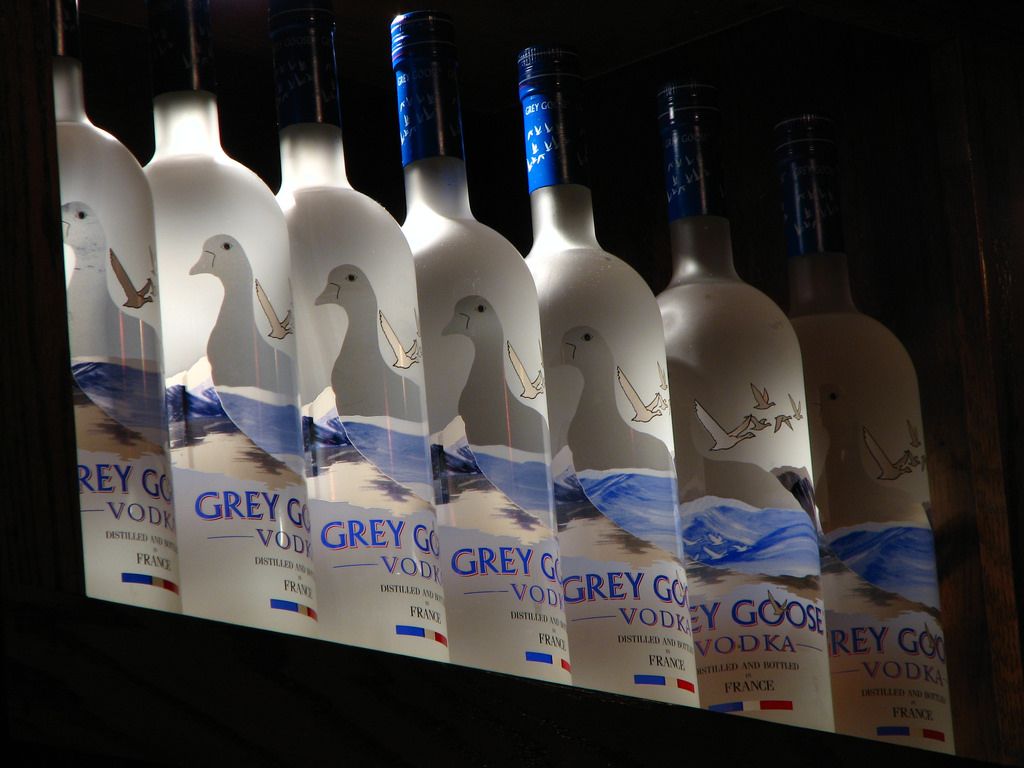
The perfect way to store your vodka. Image: Flickr / Good Eye Might
Despite that basic outline for storage, there are a few other details you'll want to pay attention to. First of all, if your bottle is capped with a cork, make sure to store the bottle upright 'cause otherwise the vodka will eat away at the cork. You also really want to make sure that no sunlight can get to the bottle, as that will speed up the vodka's evaporation speed, as well as change the taste of the vodka. If you think you'll be using up your vodka soon, however — celebrating with friends while you eat some borscht, of course — then you may want to just keep it in the freezer. Again, that'll keep the vodka chilled enough to stay relatively viscous, which will improve its taste.THE FUTURE OF VODKA
How about the future of vodka? What can the vodka industry possibly do to improve upon such a simple spirit? Here's how: RISE OF CRAFT DISTILLERIES It seems that one of the biggest trends, if the not the biggest, for the future of vodka is the rise of craft distilleries. Chicago-based food writer, Michael Nagrant, told Forbes that "Some craft distillers are benefiting from the loyalty that craft beer makers have cultivated in their customers... that's helpful with a product like vodka, which generally is colorless, odorless and neutral in taste (the exception being flavored vodkas)." Nagrant also told Forbes that craft vodka distilleries are also "generally... willing to take more risks than the big players."
One brand of craft vodka. Image: Flickr / Baker County Tourism
Departures notes that the American Craft Spirits association has said that "'The craft distilling industry is growing with, on average, one distillery opening per day. There are craft spirits distilleries operating in all fifty states, employing close to 20,000 people.'" Multiple news and alcohol-related sites, including Bloomberg and Night Club & Bar, have also noted that massive alcohol companies, such as Diageo and Pernod Ricard, are also taking aim at craft vodka distilleries, launching their own smaller brands that aim to convey an image of being small, one-off operations that have nothing to do with their giant parent corporations. But what does this really mean for the future of vodka? It means that in the near future, you should expect to see a lot more vodkas with the "craft" label, even if they're coming from distilleries that are ultimately owned by giant mega-corporations. You can also expect these craft vodkas — whether they're made by genuine craft distilleries or not — to be producing a ton of flavorful vodka. If you're looking to jump on this trend ASAP, you'll probably want to know that some of the best craft distilleries in the U.S. include Tom's Town Distilling Co., Charbay Vodka, Hangar 1, Corbin Vodka, Blue Ice American Vodka, Cold River Vodka, Woody Creek Distillers, Young State America, and Caledonia Spirits. NEW (OR AT LEAST NOT-YET-MAINSTREAM) FLAVORS OF VODKA On top of the rise of craft distilleries, new flavors are also popping up on the scene, because why not, right? Seriously, there are just new flavors on the market and there's not much more to say about it. Some of these flavors include: botanical blends, rosé, brandy and caramel, pecan, fresh cut grass (seriously), Sriracha and even menthol tobacco.
Fresh cut grass-flavored vodka. Image: Flickr / Rori.D
BARREL AGING VODKA Finally we have a little bit of whiskey style sneaking into our vodka game of the future with barrel aging. In terms of the tech here, yeah, there's not much going on — distilleries are just starting to stick their vodka into barrels and letting said barrels affect the flavor and color of the vodka. You know, exactly like whiskey. But even though this flavoring and coloring technique is far from novel — even for vodka — it is taking off and becoming more popular in vodka markets. And it's raising a lot of philosophical, as well as regulatory, questions. As mentioned earlier in this guide, vodka is, by many official definitions — including the one that dictates U.S. federal law — a colorless, flavorless, odorless liquor, and barrel aging would negate all three of those qualities. Nevertheless, vodka distilleries are indeed starting to launch barrel-aged vodkas (such as Absolut's "Oak" line), and the odds are nearly 100% that you're going to start seeing them pop up on bar shelves all over the U.S.
If you didn't believe us, here's a picture of some barrel-aged vodka. Image: Flickr / jim harris
What should you expect taste-wise from barrel-aged vodka? New York City bartender Orson Salicetti told WineEnthusiast that "Introducing wood adds complex flavors and a richness that has been purposefully absent in straight vodka, including aromas of the source—be it potato, wheat or honey..." adding that "It mellows the vodka heat a bit, much like whiskey, and gives you so much more flavor to play with...." After tasting Absolut's Oak line of vodka, MarketWatch reporter Charles Passy wrote that "It’s hard to think of a sip that has confused our taste buds more than [this barrel-aged vodka]. It’s certainly not a traditional vodka—or even a traditional flavored vodka. But it’s far from a bourbon. Instead, it delivers a kind of mild bourbon flavor, with notes of smoke and vanilla, in a vodka-like 80-proof alcohol-delivery system." Regardless of the flavors garnered from barrel aging, it's clear that vodka distilleries are going to go down this path to at least explore it. And if it's successful, who knows? Maybe it'll become even more popular than regular vodka and help distillers to regain some of the market share that's been lost to Bourbon and other whiskeys in recent years. Although if that's the case, the difference between vodka and whiskey will become more and more trivial anyway....FIVE OF OUR FAVORITE VODKA DRINKS
OK people, it's time to go! To go and drink vodka and have fun! There's no better way to learn about it than to actually make drinks and drink said drinks, right? With that in mind, here are a few of personal favorite vodka cocktails. 1. LEMON DROP SHOTS https://www.youtube.com/embed/00yQhAcipzg 2. BLACKBERRY SMASH https://www.youtube.com/embed/18qkfa4WFBo 3. ELECTRIC LEMONADE https://www.youtube.com/embed/zWZsvE2Rroc 4. ESPRESSO MARTINI https://www.youtube.com/embed/ZAgk9eWhKKc 5. LONG ISLAND ICED TEA https://www.youtube.com/embed/cUZTStHFePw GIFS: Giphy
Independence Day Drinks
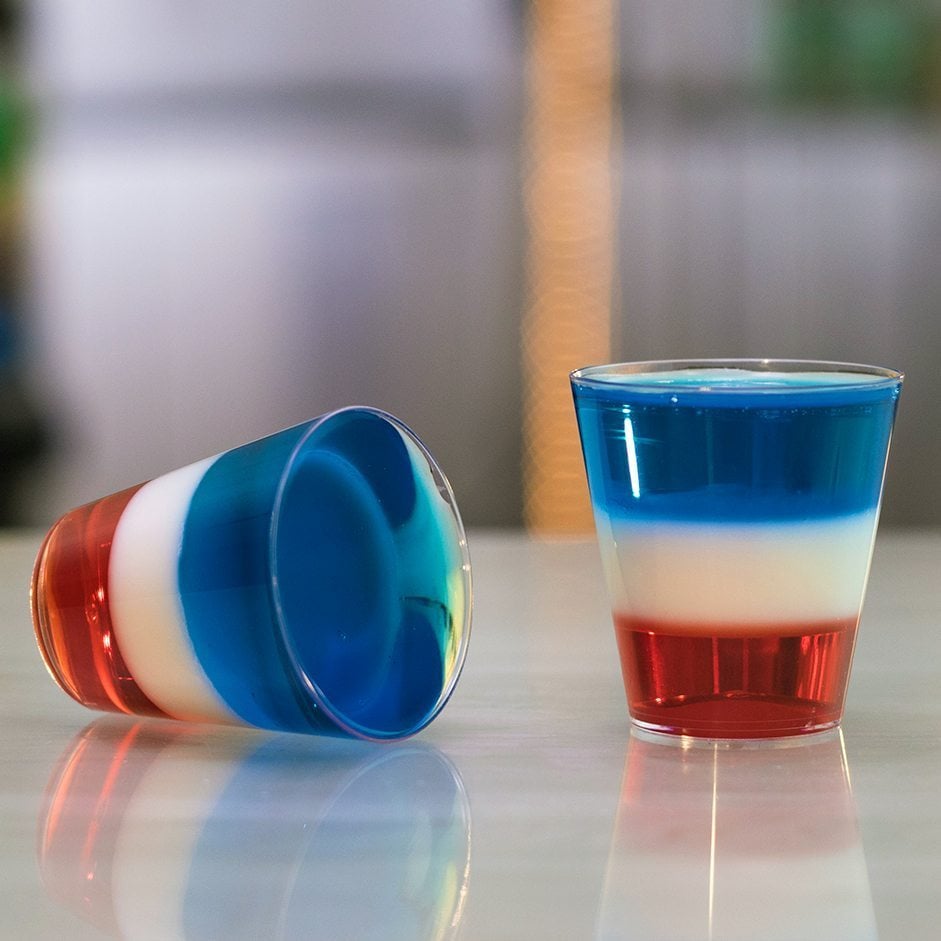
4th Of July All American Jello Shots

4th Of July Cake Vodka Milkshake

4th Of July Diversity Bomb Shot
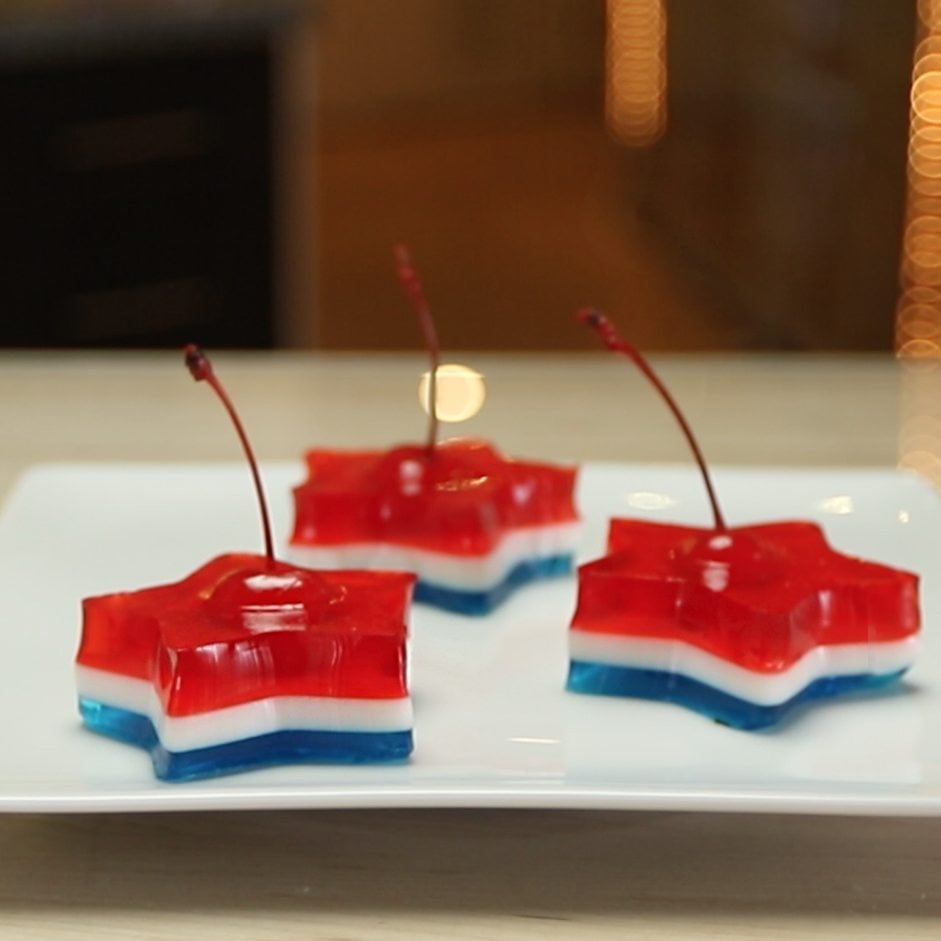
4th Of July Jello Shots
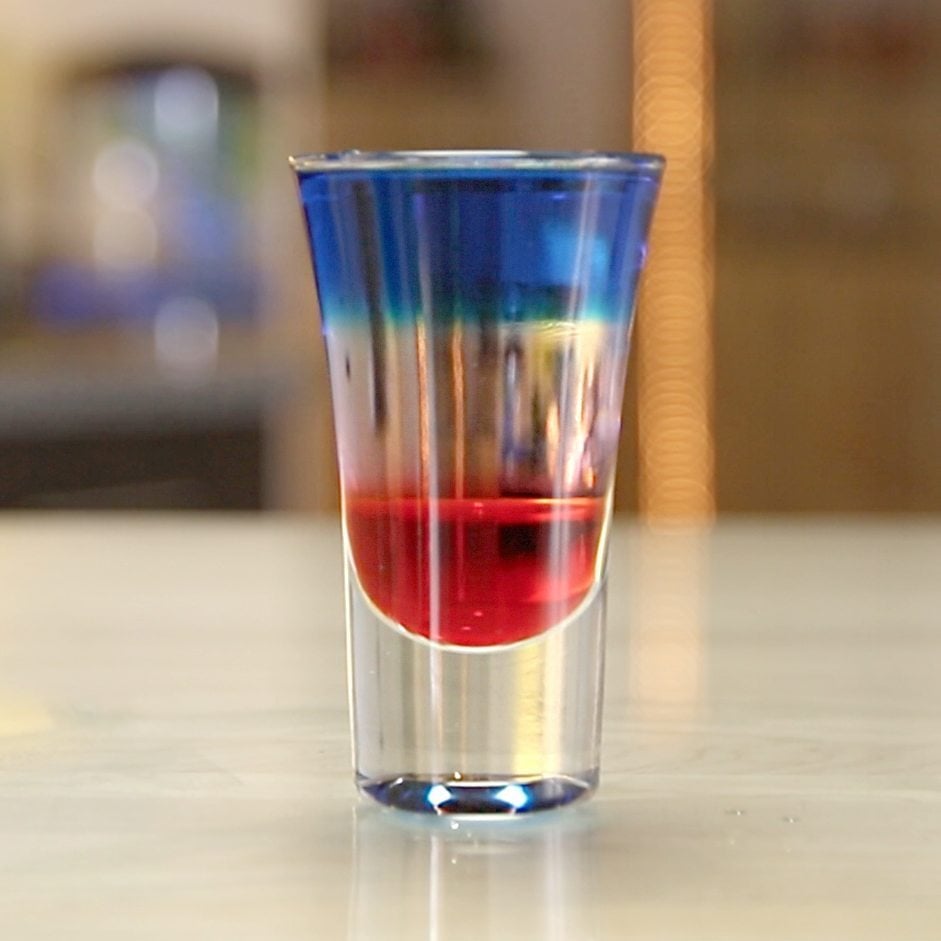
4th Of July Layered Shots
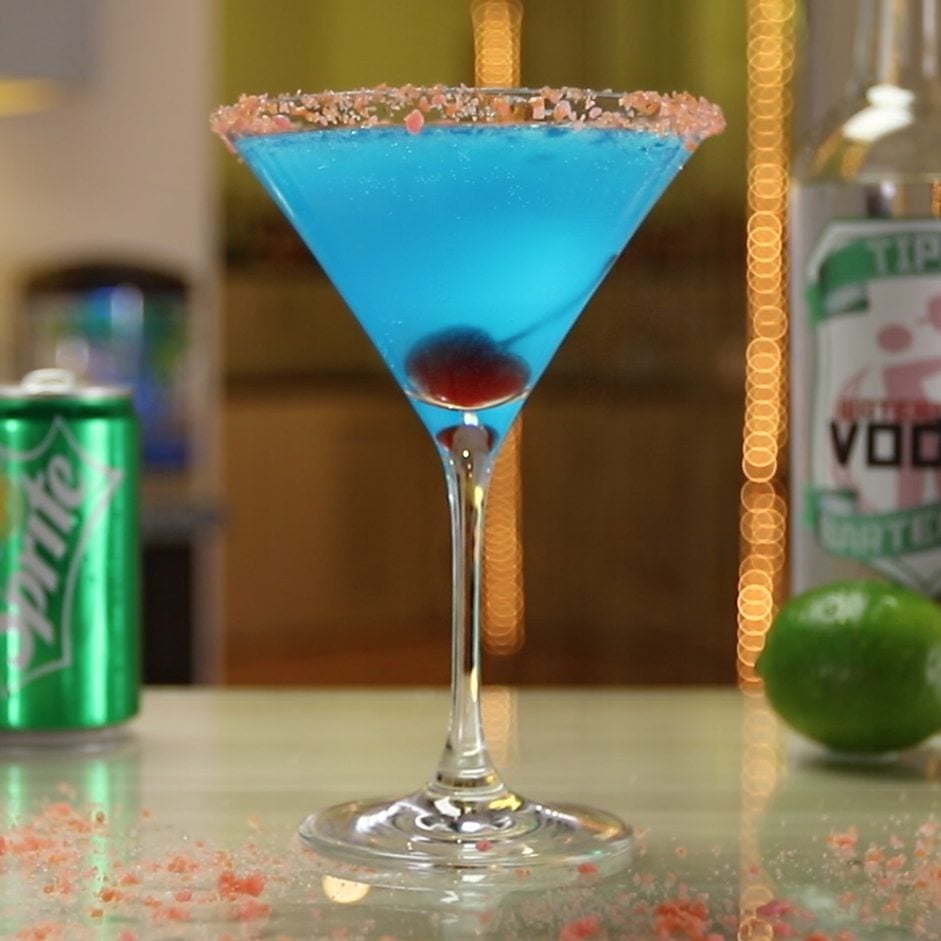
4th Of July Pop Rocks Martini
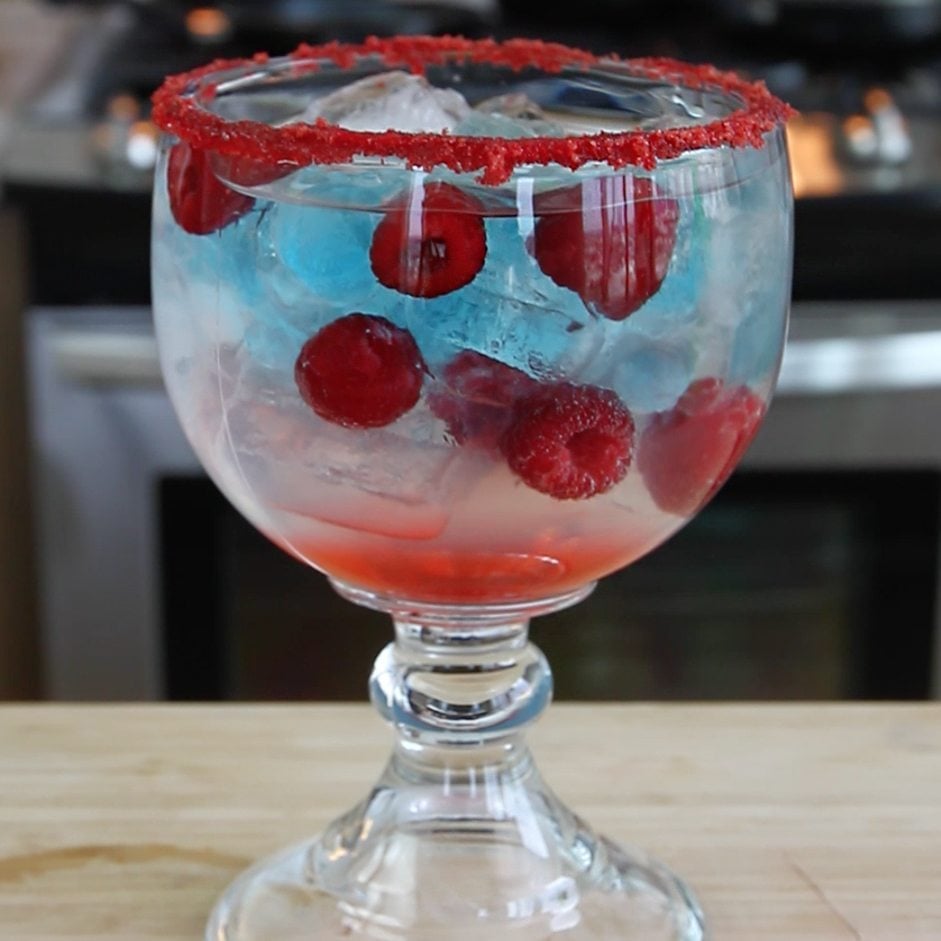
4th Of July Raspberry America

4th Of July Spiked Bomb Pops

4th July Popsicle Margarita
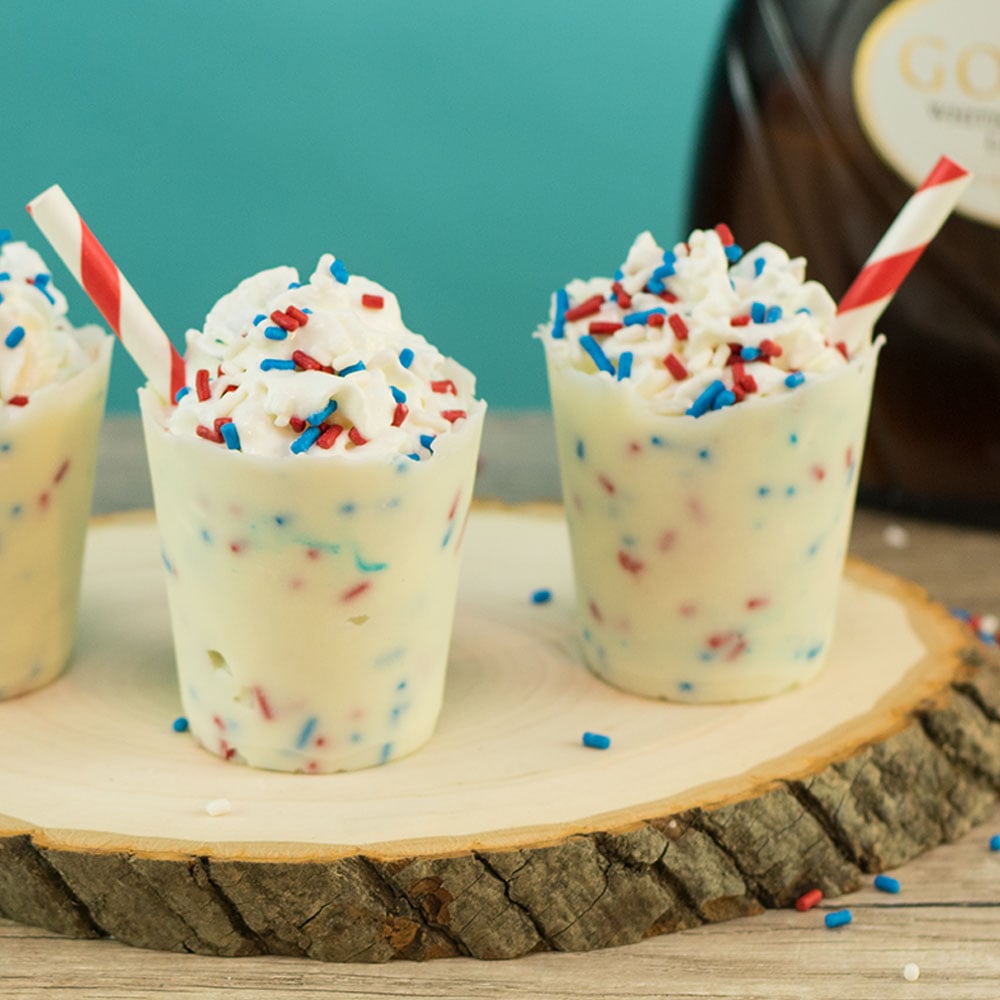
4th July Edible Shot Glasses
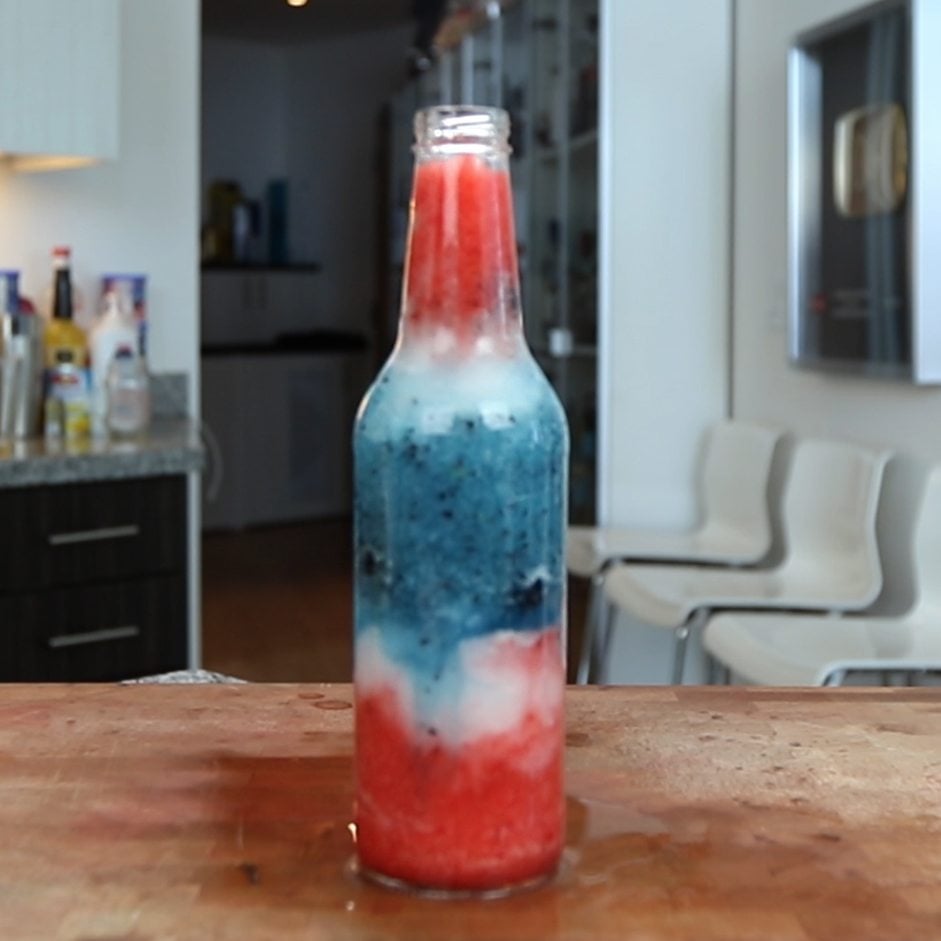
4th July In A Bottle
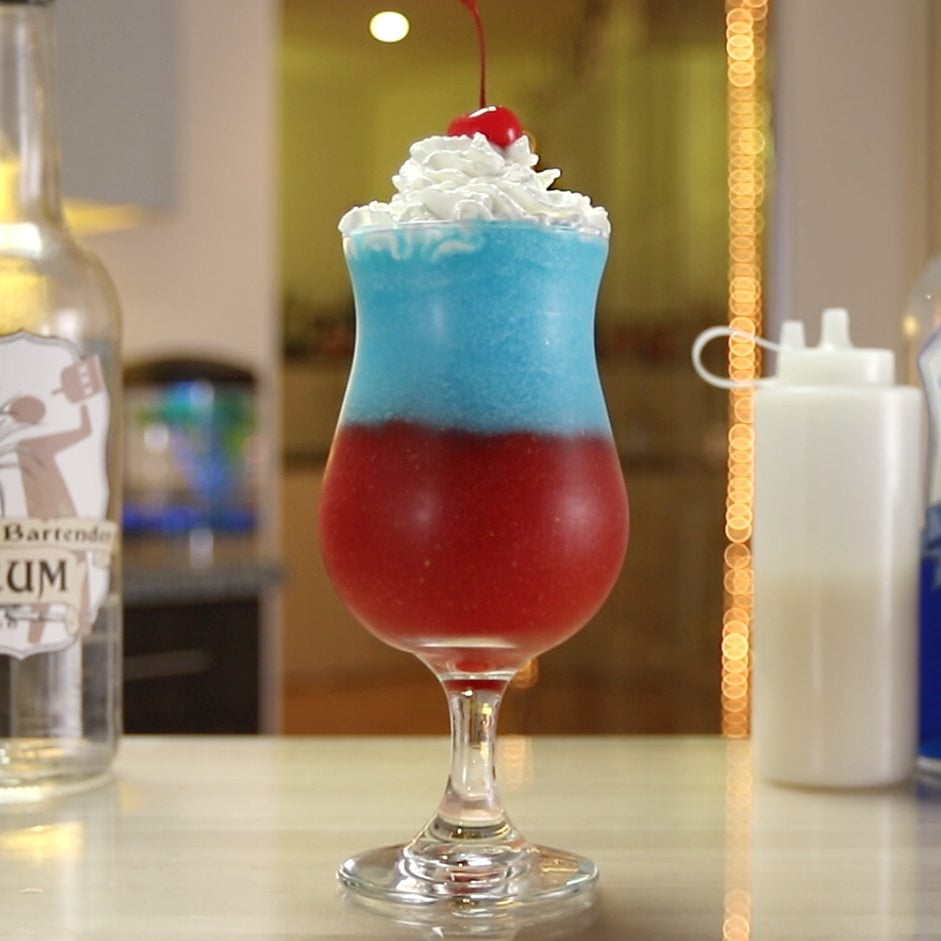
All American Daiquiri


